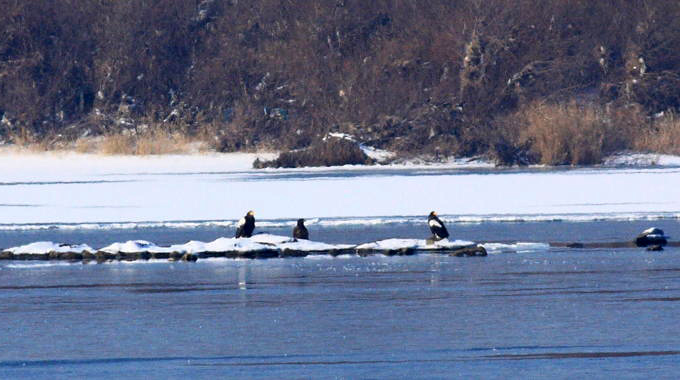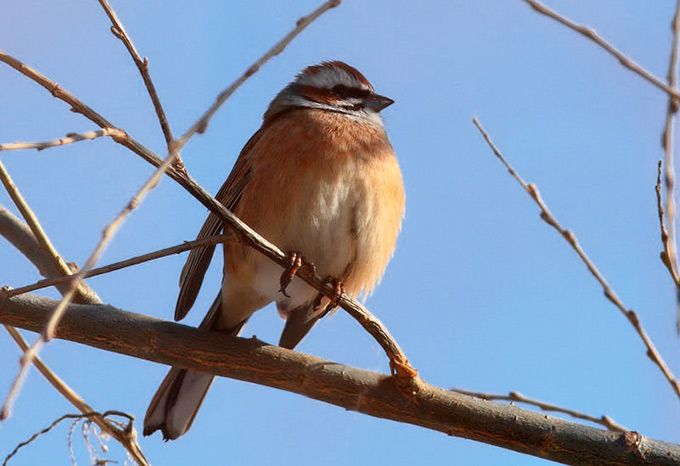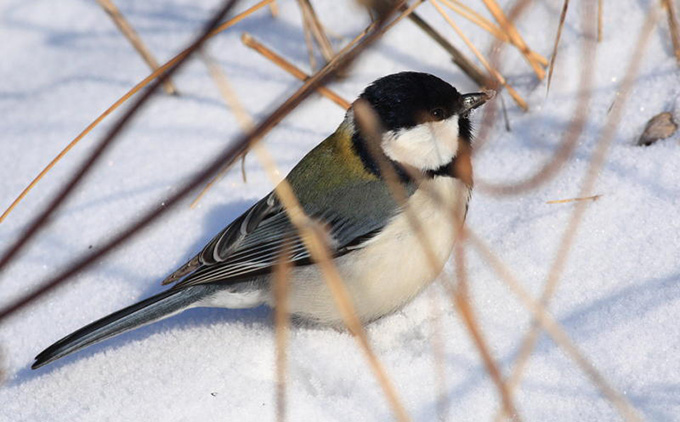 | E-mail to Birds Korea |
 | KWBS |
in the Region
 | The Oriental Bird Club |
 | BirdLife International (Asia) |
January
In occasional periods of extreme cold many smaller rivers and reservoirs freeze over. Temperatures often drop to -5°C at night, and stay near freezing in the day. Periods of light snow and severe cold are usually followed by milder temperatures for a few days, and then severe cold again.
Mid-winter specialties include Baikal Teal (in often huge concentrations) and Scaly-sided Merganser, Swan and Lesser White-fronted Goose, Steller’s Sea Eagle, Relict and Saunders’s Gulls and Solitary Snipe! Red-crowned and White-naped Cranes and Cinereous Vultures are concentrated in the Cheorwon basin, with Hooded Cranes at Seosan and Suncheon in the south, and huge numbers of ducks and geese at the Geum and in Haenam. Milder conditions on the southern island of Jeju allow species like Black-faced Spoonbill, White’s & Pale Thrushes, and even taivana Eastern Yellow Wagtails to over-winter. On the East coast, there are plenty of gulls to check through, and favoured seawatching areas such as the Guryongpo peninsula and north Gangwon Province provide chances to see Yellow-billed Loon, Long-billed Murrelet and Spectacled Guillemot along with occasionally large numbers of Ancient Murrelet and smaller groups of Rhinoceros Auklet.
National highlights in recent years have included Lesser Whitethroat, Asian Rosy Finch, Red-crested Pochard, and White-bellied Green Pigeon.
Recent Korean firsts in January have included a Plumbeous Water Redstart at Daejon in 2006, a Desert Wheatear at Pohang in 2008, and in 2009 the first and second records of King Eider, both on the East coast.
(The following records are a compilation of our own sightings and records sent in by other observers. As well as being posted on the Birds Korea website(s), selected records are also forwarded to other Korean-language birding websites; records of threatened species are arranged and forwarded to Birdlife International and national authorities when appropriate; flag images and records are passed to bodies responsible for their coordination throughout the flyway; and all records sent to us are used to compile annual reports and to support the evolving understanding of the status of many of Korea’s birds.)
Junam Reservoir, January 31
A short lunchtime visit to a completely ice-free reservoir, the first time I have seen it unfrozen since the middle of December. Despite the crowds of people (as expected on a Sunday), there were some good birds to be seen. 10 Hooded Cranes rested on the mud spit for a time, before flying off high to the northwest. Just 9 White-naped Cranes were present - the rest of the flock were no doubt feeding in nearby rice fields. 2 Swan Geese were still feeding beside the mud spit. A drake Common Merganser and plenty of Smew were attracted to the ice-free waters, as were greatly increased numbers of other common wildfowl. Away from the water, 2 White-tailed Eagles (presumably the usual wintering duo) perched in one of their favourite spots in the row of trees along the southern edge of the reservoir. A very obliging Meadow Bunting gave scope-filling views in reeds at the corner of the reservoir nearest the Junam 3rd pumping station, while a Japanese Pygmy Woodpecker in scrub near the visitor centre was a personal first for this site.
Eastern Coastal Jeju, January 30
A fine day of birding, in spite of gray rainy weather and several missed birds. We started in Seogwipo, and made our way east around the whole eastern half of Jeju, finally arriving in Jeju City. At Pyeoson, 30 Kentish Plover mingled with a flock of over 100 Sanderling. On the southeast coast near Sinsan we searched for a Saunders's Gull that had recently been seen there. We thought we'd found it, but 2 small whitish gulls turned out to be Black-headed Gulls (one adult winter bird, and one with 1st winter plumage). They were interesting to watch, as they hovered and dive-bombed aerobatically. A Pacific Reef Heron beat a thrashing fish (it looked like a Crocodilian Longtom) into submission, before swallowing it whole. The fish continued to thrash around in the Heron's throat for a minute or two. A Horned Grebe and and a Common Goldeneye were also seen nearby. At Seongsan, large numbers (200+) of Eurasian Wigeon and Spot-billed Duck mingled with smaller groups of Coot and Northern Shoveler. Nine Greater White-fronted Geese, a Horned Grebe, and a Dusky Thrush (the first I've seen this winter) were also present at Seongsan. At Hado, more large numbers of Eurasian Wigeon, and smaller numbers of Tufted Duck, Gadwall, and Coot. Several Great Egret, Grey Heron, and Little Egret stood guard near 15 Black-faced Spoonbill, and 2 Eurasian Spoonbill. About 25 Bean Geese landed noisily nearby. Along the northeast coast, Red-breasted Merganser were plentiful, with several dozen seen. We spent about 2 hours vainly searching for a spectacular male Harlequin Duck that had been seen and photographed by a Korean birder near Sehwa that day. Near Sehwa and west towards Jeju City, we further saw 2 Common Shelduck, 6 Eurasian Teal, more Eurasian Wigeon, several Pintail, a Grey Plover, 9 Dunlin, 2 Pacific Loon, 3 Black-throated Loon and a Carrion Crow. The crow was notable in that Large-billed Crow seem to predominate on Jeju, and this was the first Carrion Crow I've seen here.
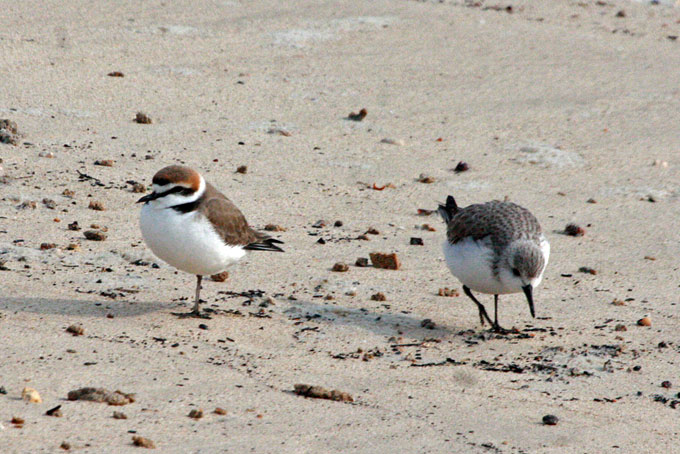

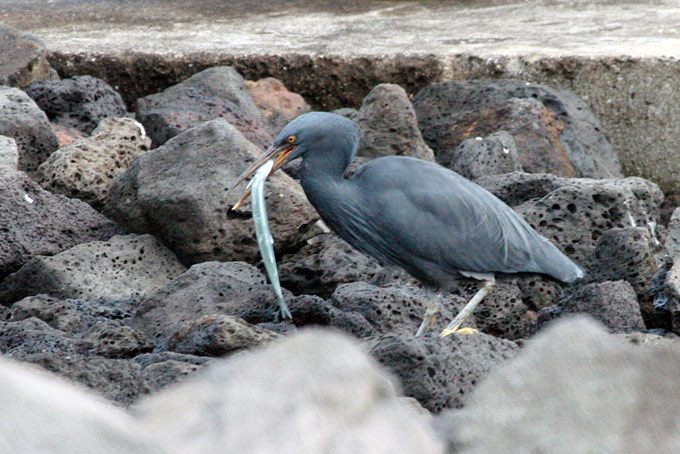
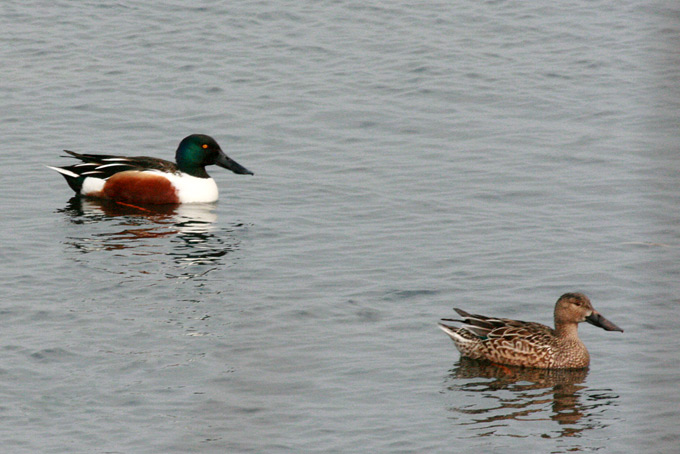

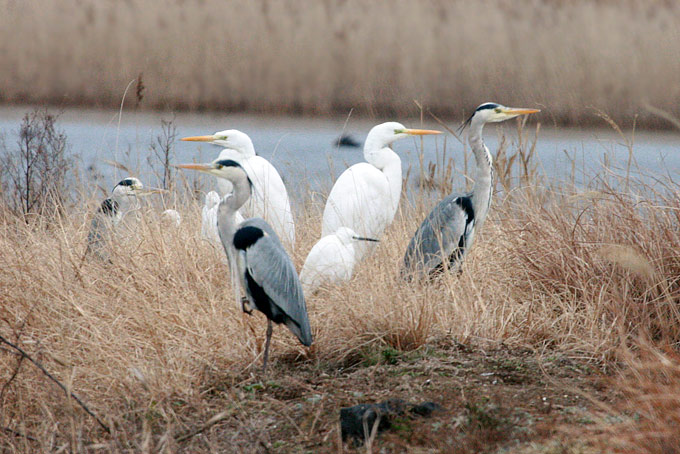
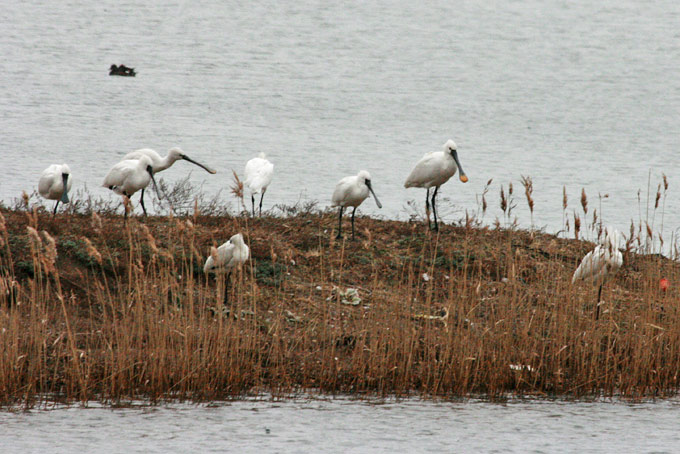
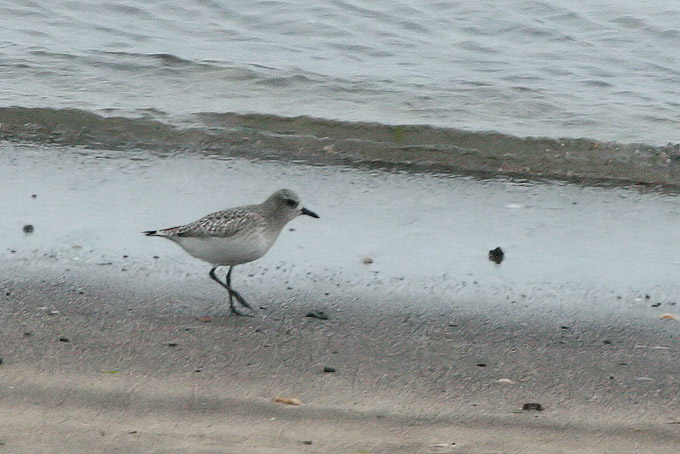
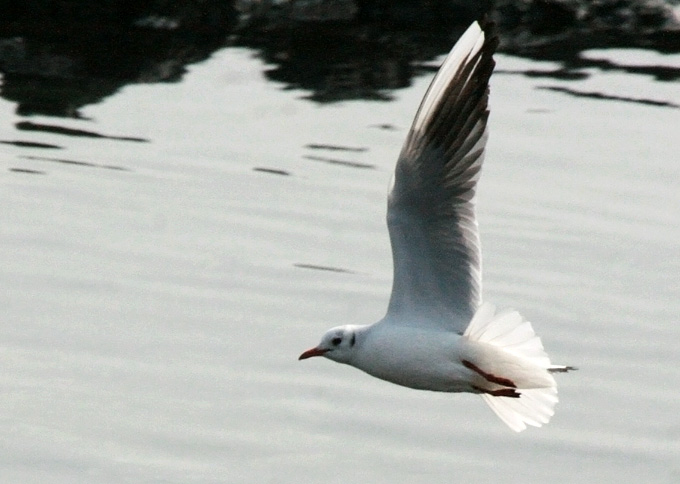
Daejeon, January 30
This year there were a few more Scaly-sided Merganser (1male, 4 females) than during the same period 2 years ago. The river is also relatively very undisturbed and togther with the Mergansers there were a number of other waterfowl including Falcated Teal, Mandarin Duck, Common Goldeneye, Tufted Duck, Common Merganser, Mallard, Pintail, Spot-billed Duck and Common Teal.
Ansan, January 30
In the morning at the public reed park, plentiful Pallas's & Common Reed Buntings: also glimpsed were two buntings showing a clear rufous-apricot wash to their underparts,which unfortunately could not be inspected more closely. After days of nothing but hard frozen ice, a tired and presumably starving Eurasian Bittern roosted in a curled-up ball, presumably to conserve energy.. Barely moving, it was still standing in the same foetal position position when I returned to check on it 2 hours later.
Otherwise, good looks again at the prowling pair of Raccoon Dogs as well as a Eurasian Sparrowhawk, Mandarin, 2 Hawfinch, a recently plucked Japanese Quail,2 Coot,1 Pale Thrush, a party of Long-tailed Tit, 2 Naumann's Thrush, 2 Whooper and 1 Tundra Swan, mixed Bean & Greater White-fronted Geese, and a relatively large flock (c.70) of Northern Skylark.
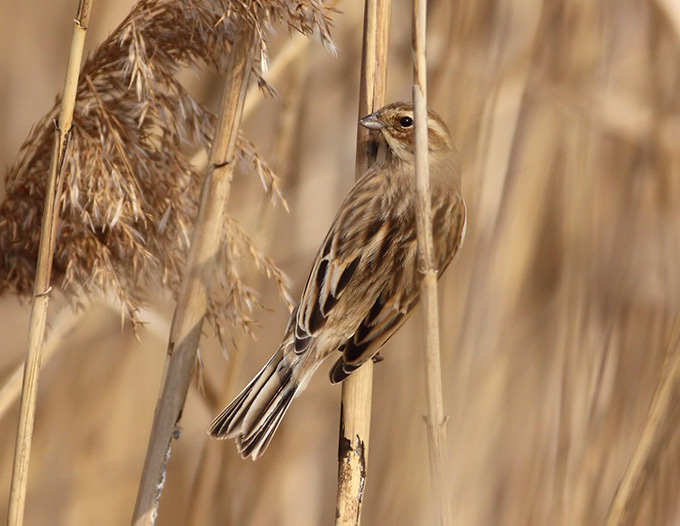
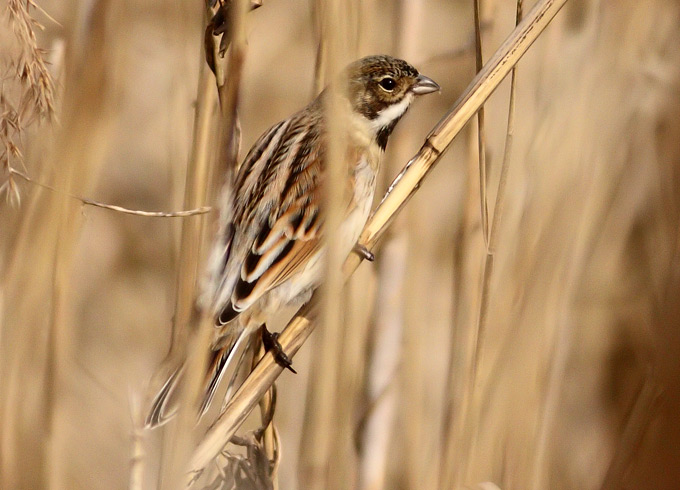
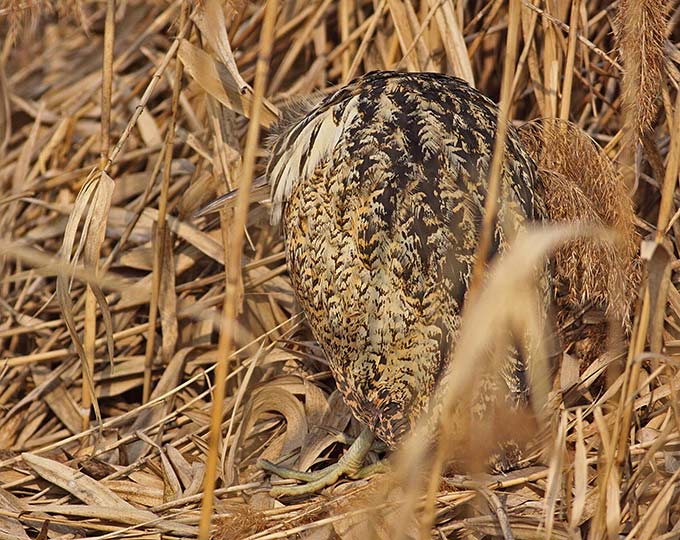
Incheon-Socheong, Socheong-Incheon, January 29 and 30
For work on the Birds Korea Blueprint and as part of research for the great University of Newcastle (Australia), a quick run out to Socheong to count seabirds at sea and to improve our understanding of overwinterers on the island. In very heavy seas, in between weather systems, few seabirds from the ferries, with highlights a single Yellow-billed Loon and a couple dozen Ancient Murrelet. On and from Socheong itself, the four most numerous species logged were Pelagic Cormorant (84: with almost all in breeding plumage, and some nest site prospecting apparently starting), Long-tailed Rosefinch (56: the personal highest day concentration of this species anywhere), Eastern Great Tit (55) and White-winged Scoter (49), with other species of note two White-tailed Eagle (including an adult spectacularly catching a fish in the harbor), a Horned Grebe, a Chinese Nuthatch (heard only) and one or two Eurasian Bullfinch (very scarce so far this winter).
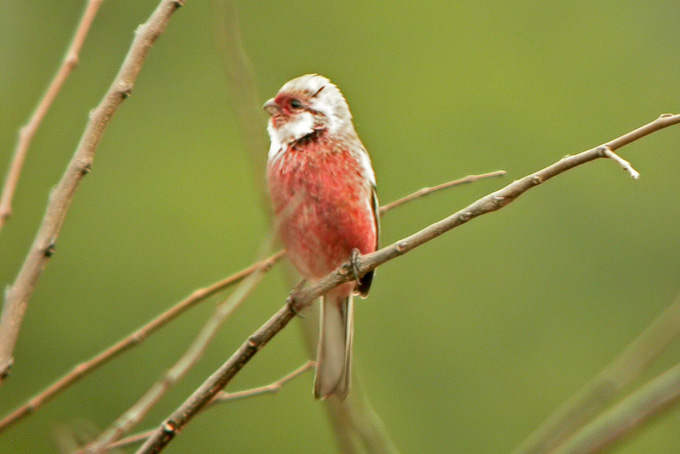
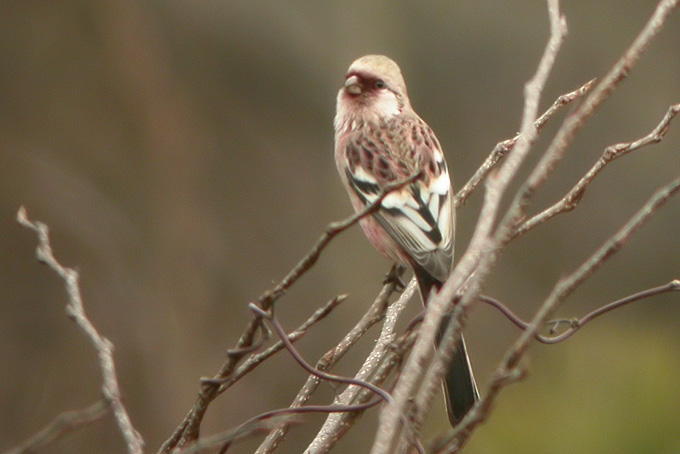
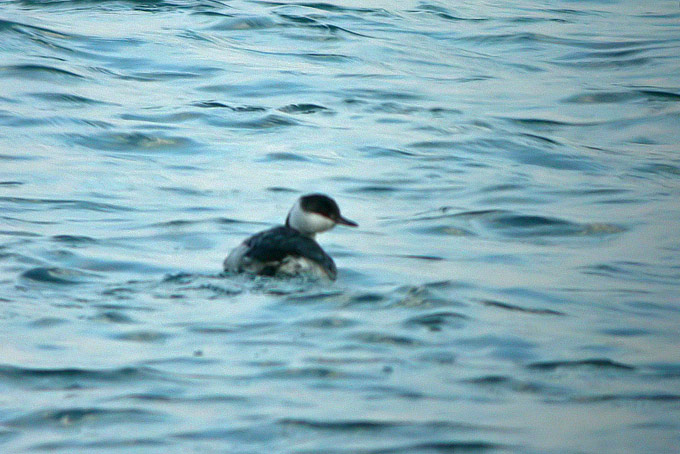
Iajin, January 26
An adult Glaucous-winged Gull eluded my lens by perching at the far end of the harbour, otherwise no surprises, with e.g. 2 Greater Scaup and c.35 Black-legged Kittiwake. The latter are something of a speciality of Iajin- I never see them elsewhere along the East Coast. 15+ Eurasian Wigeon, a Common Pochard, Mallards and a bundle of Spot-billed Duck all proved to be very at home feeding in the saltwater and on the rocky foreshore, where also c.30 Sanderling scuttled along the tideline.
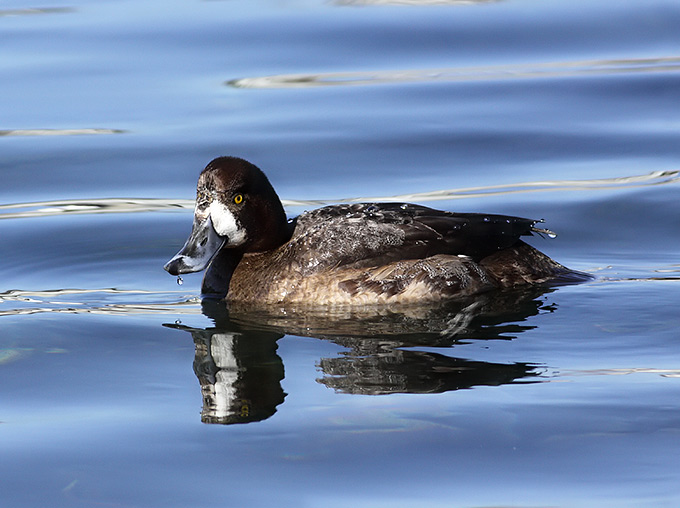
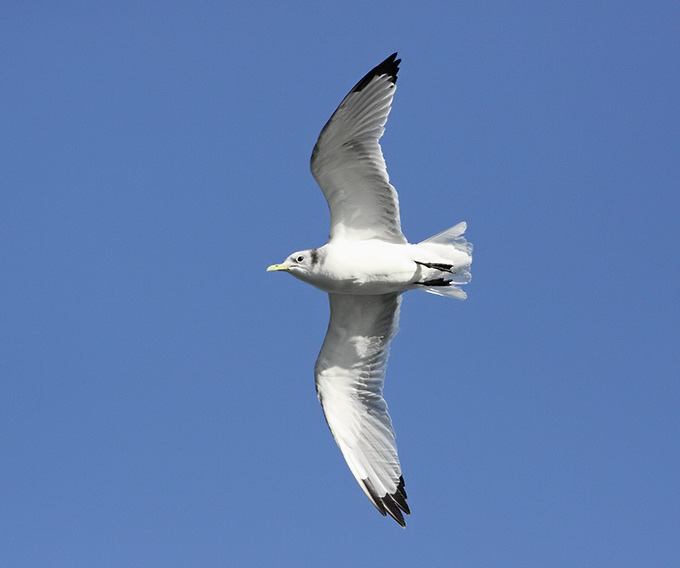
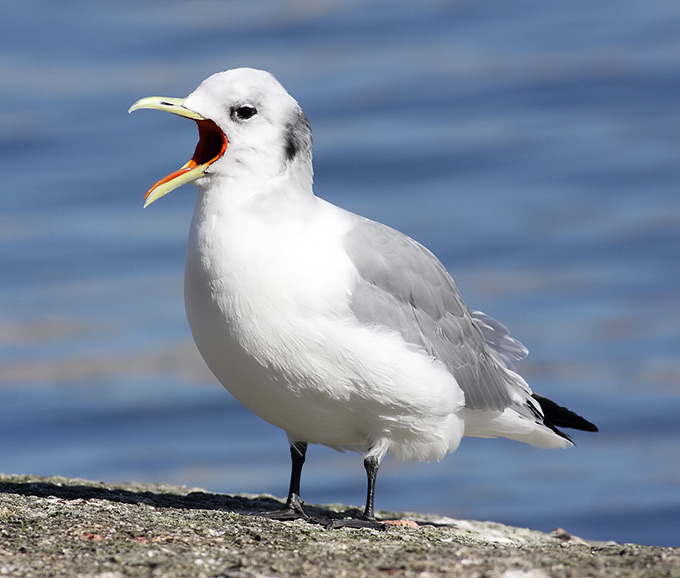
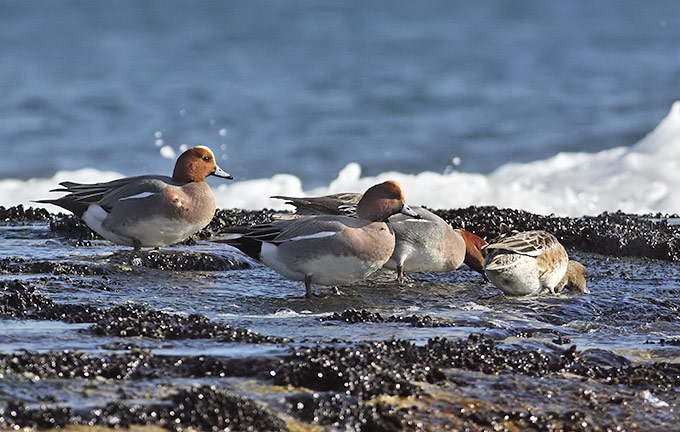
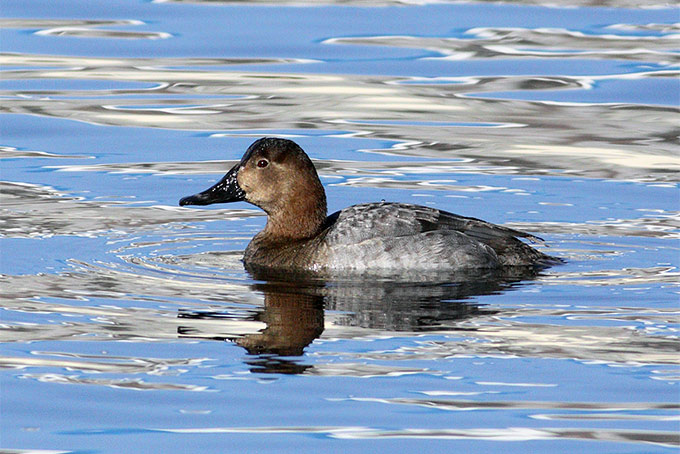
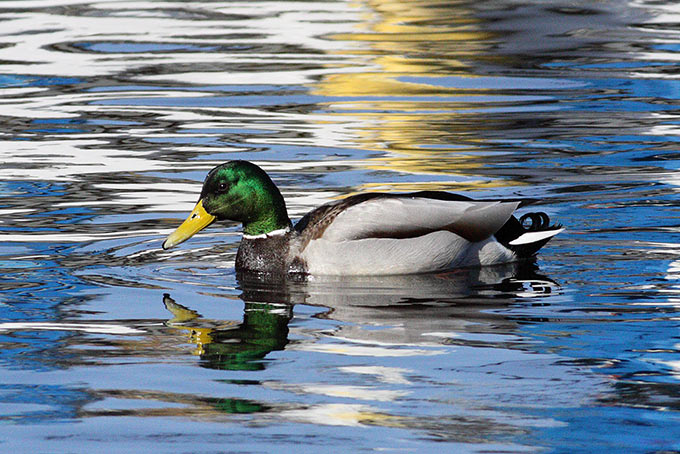
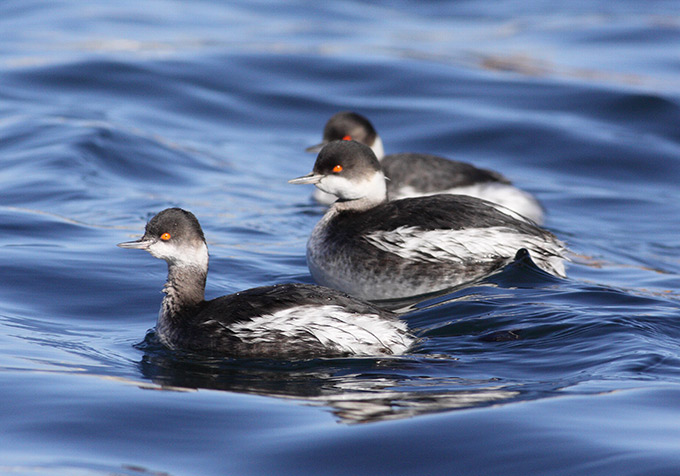
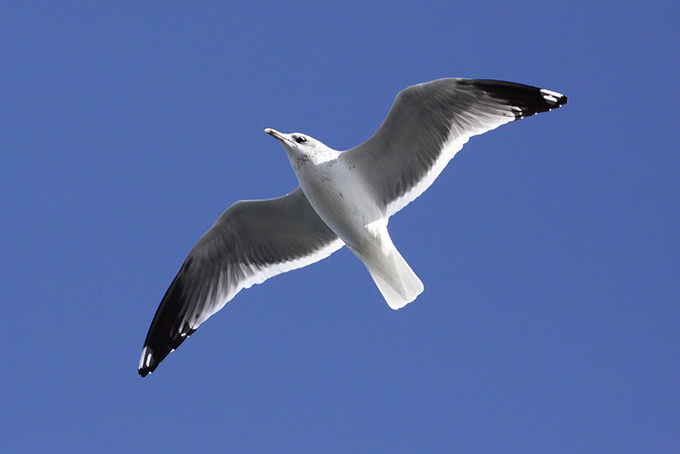
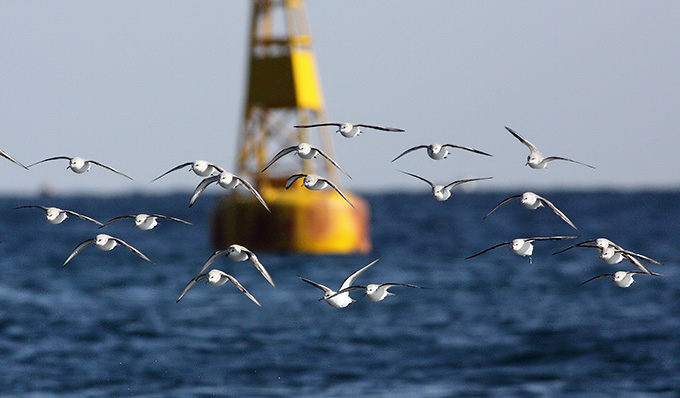
Jinju, January 26
A let-up in the cold weather saw plenty of bird activity on the Namgang just south of Jinju. Apart from the usual water birds, a pair of Olive-backed Pipits perched on a wire. A Japanese White-eye glared at me as I stood too close to his food source. A Common Kestrel hovered nearby, and a little further downstream 70 Cinereous Vultures soared, some landing on an islet midstream, A pair of immature swans floated near the bridge, the first I’d seen this winter. Going a mile or so downstream I was pleased to see a group of seven Whooper Swans, 4 adults and 3 immatures. On checking later, it transpired that the pair by the bridge had been first-winter Mute Swans. Fewer than 20 spend the winter in Korea each year, sometimes none at all.
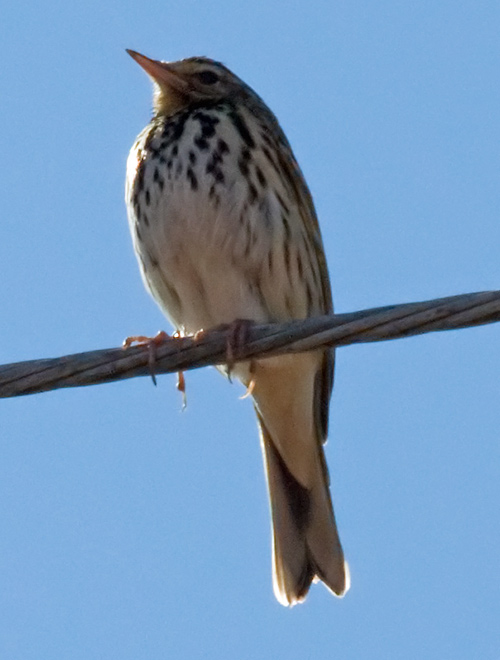
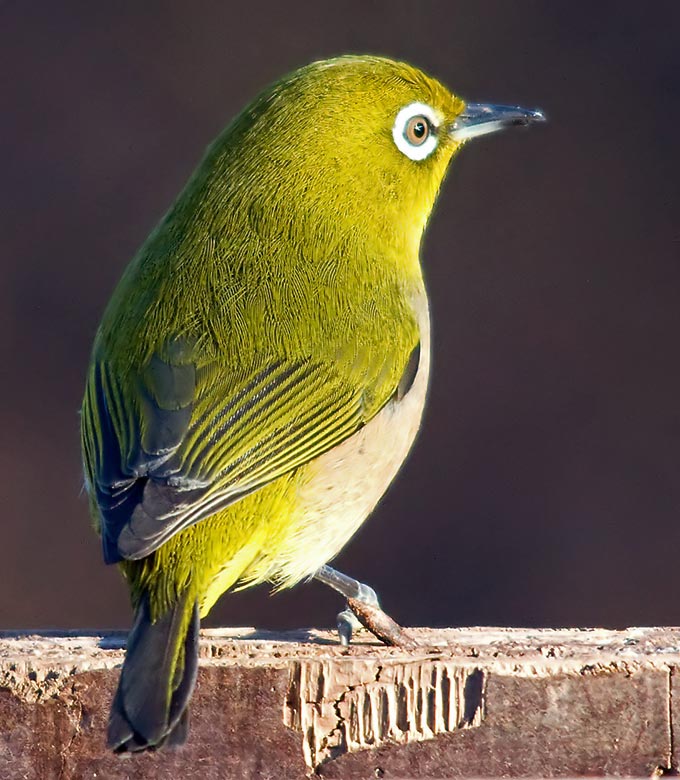
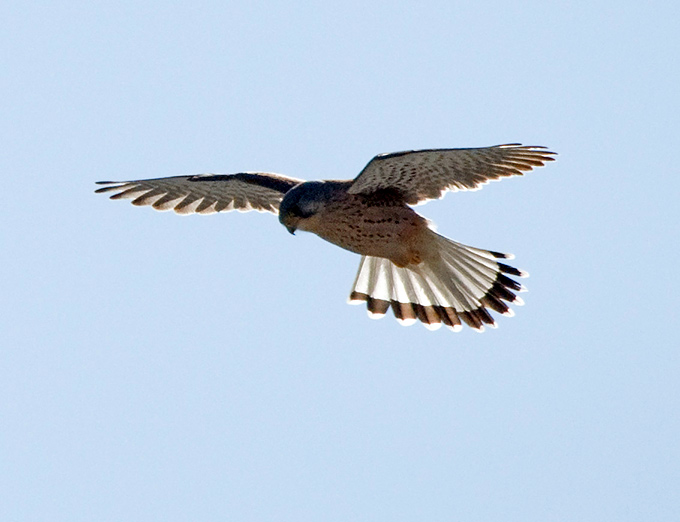
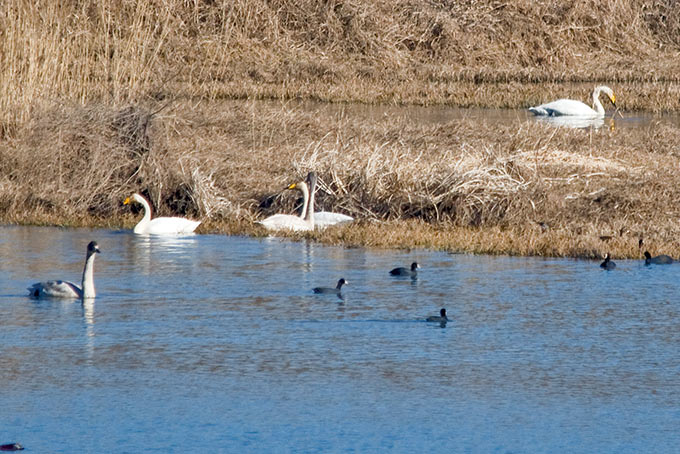
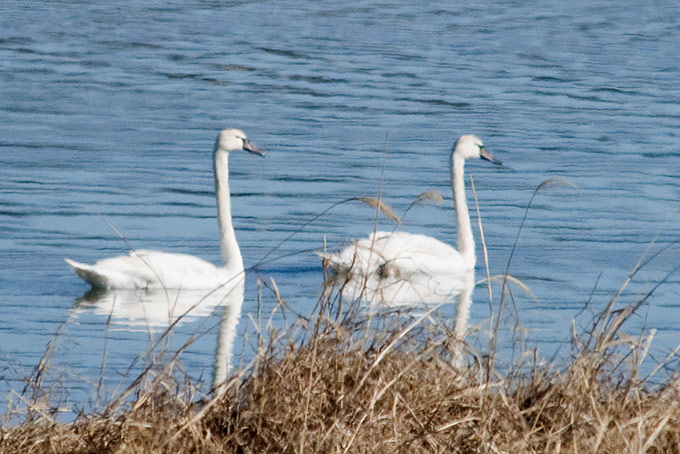
YangYang-Sokcho, January 25
A return look-in at Namdaecheon found the number of White-tailed Eagle had risen to 4: also noteworthy a Chinese Grey Shrike, 8 Whooper Swan and an Upland Buzzard.
Highlight towards the end of the day was finding a Common Murre offshore from Sokcho pavillion- diving frequently for long periods, it gave good scope views for 20 minutes or more.
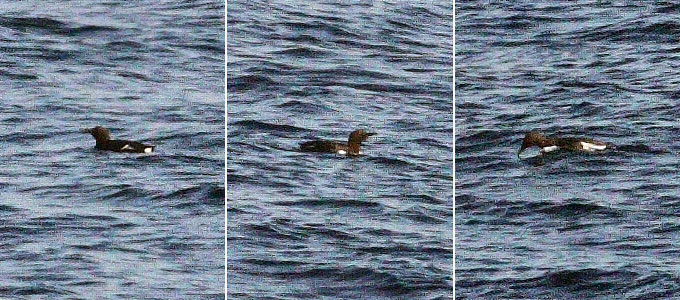
Daepo-YangYang, January 24
A brief bit of seawatching at Daepohang added Red-throated Loon and 3 Black Scoter- which are apparently remarkably scarce this trip. At the mouth of the Namdae river, best were 2 Steller's Sea Eagles fighting over a fish with 2 White-tailed Eagle and a Cinereous Vulture: one of the Stellers was later seen to pursue and harry the vulture. Also in the vicinity, c.25 Northern Skylark, a Japanese Wagtail, 2 Eurasian Sparrowhawk & an Eastern Buzzard: in the dune scrub 3 Japanese Quail, several Pallas's & 1 Common Reed Bunting.
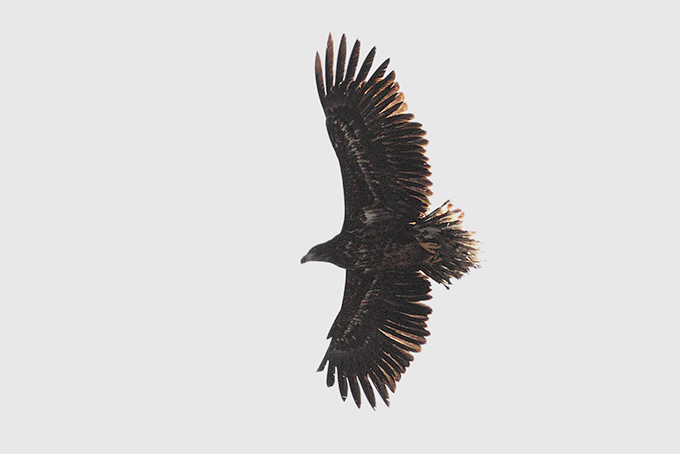
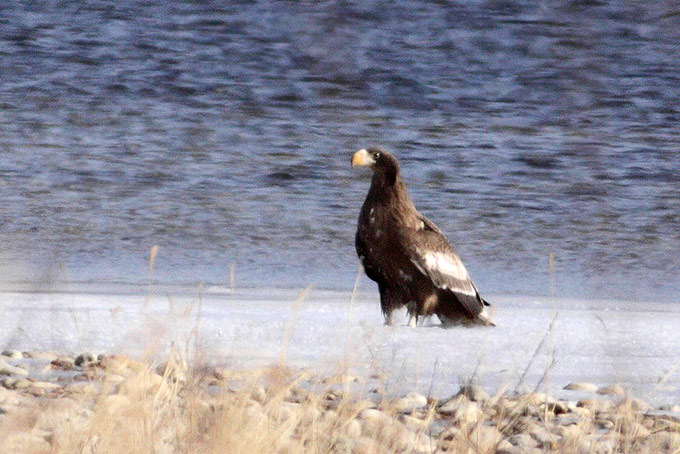
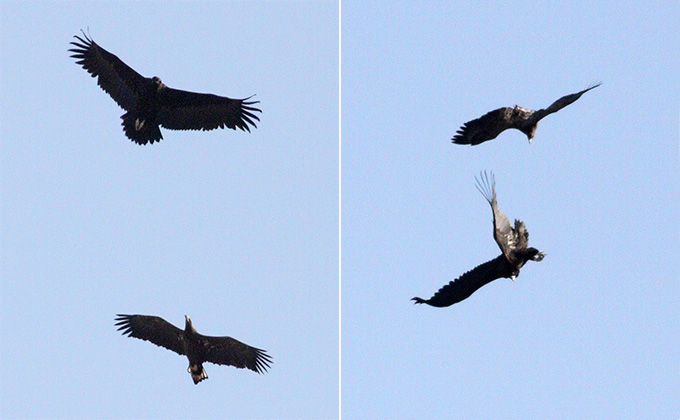
Seogwipo, Jeju island, January 24
A sunny and crisp day in Seogwipo. Several Little Grebe and a shy male Falcated Duck joined 2 Red-throated Loons in the harbor. and two Osprey circled high above. One of the loons had a bill that seemed quite pale for a Red-throated. In a nearby park, a regular Green Sandpiper was spotted in the river, while 2 Peregrine Falcons performed a noisy aerobatic foot-grasping display overhead.
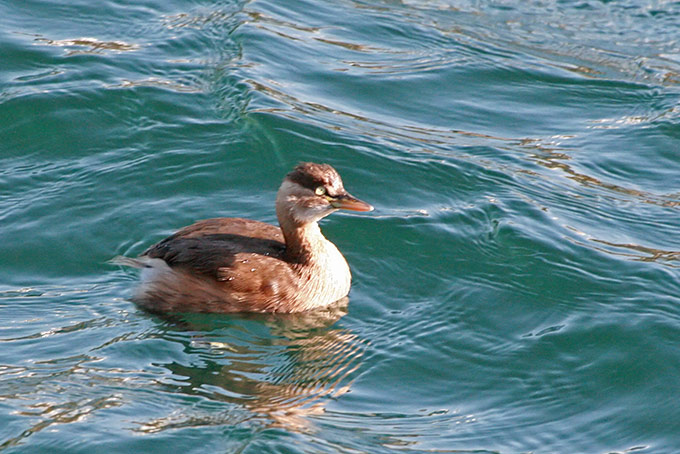
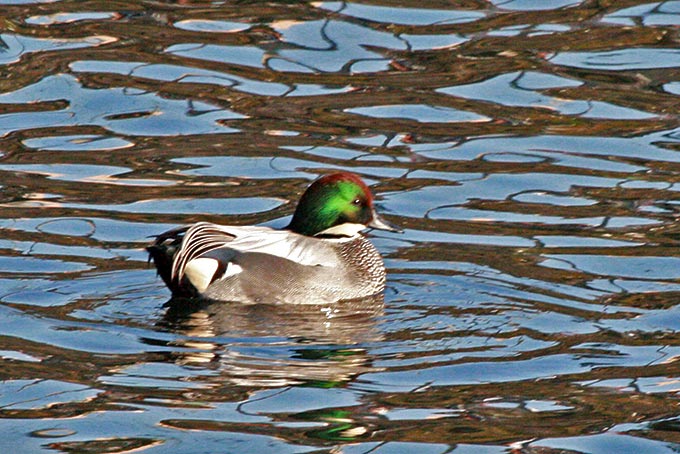
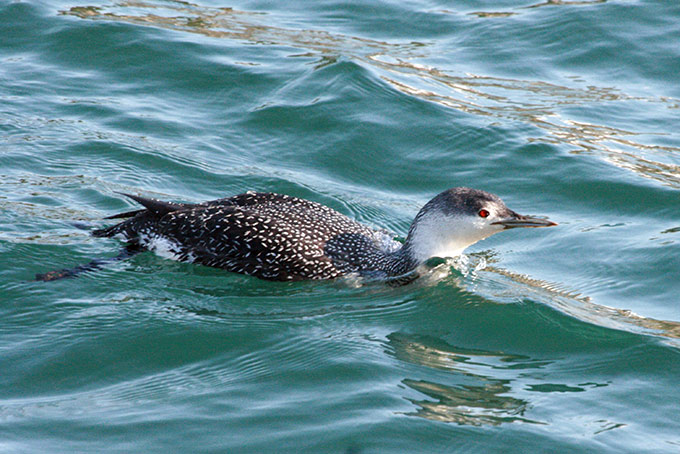
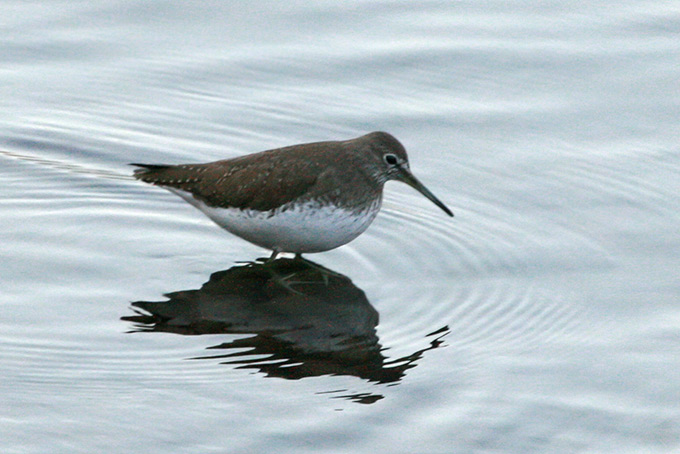

Gwangyang, January 24
On a short trip to a nearby lake we counted over 600 Mandarin Duck with about 15 Baikal Teal mixed in. On the way back we passed some goat farms with very good numbers of Cinereous Vulture hanging around.
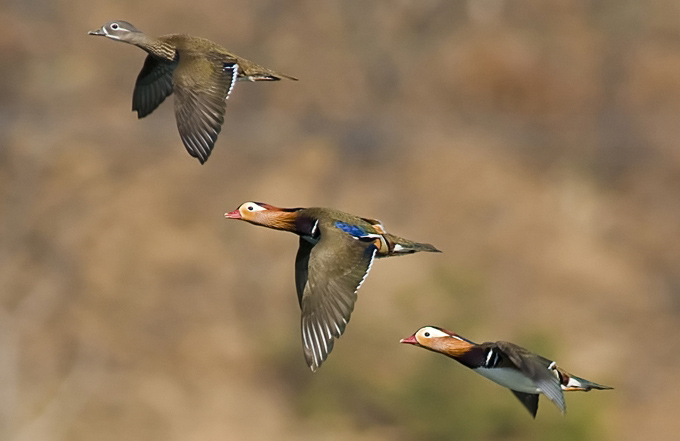
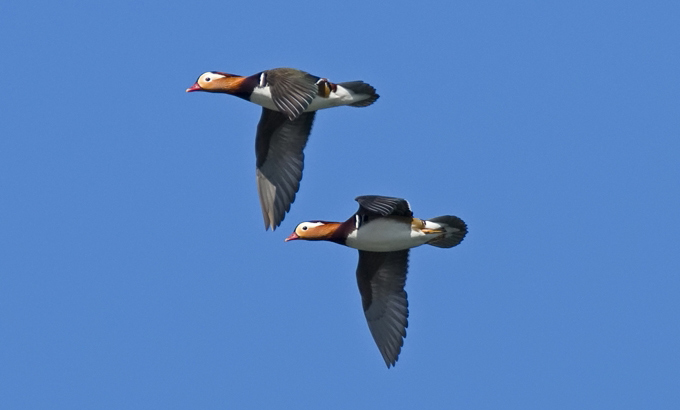
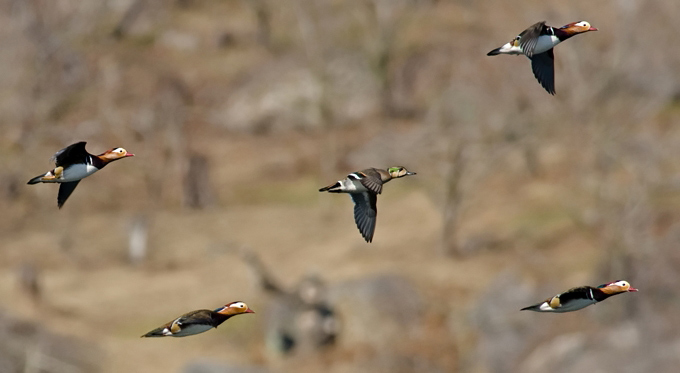
Nakdong Estuary-Joonam-SE River, January 24
A subzero dawn and early morning at the Nakdong Estuary yielded few new birds (and again no Relict Gull or geese), while woodland at Dadapo held at least one Grey Bunting (heard only), several Pale Thrush and highlight, an Amur Leopard Cat (personal first at this site). At Joonam, hordes of people, though still 80 White-naped Crane, two Swan Goose, c10 Baikal Teal, a Ruddy Shelduck and a Great Bittern as highlights. In the evening, an hour at SE River found more construction near to the river, though in the only quiet “corner” happily still 10 Scaly-sided Merganser (3 male, 7 female). Watching these birds at a very safe distance, best moment of the day… A sudden movement among boulders and shadows right behind an adult male Scalie resolved itself into first one, and then into a family party of River Otter! As the minutes passed, more emerged along the river - until eight were counted in a single scan, with the closest (a group of three) “playing tag” in the river only 100m or so away. Clearly, some undisturbed stretches of river are still very much alive.
Geojin-Daejin, January 23
Unfortunately the picturesque but ice-entombed Songji lagoon held no Mute Swan. Geojin harbor area featured at least 10 Siberian Accentor, a handful of Hawfinches and a delightful Chinese Nuthatch. Seawatching from the pavilion added several Red-necked Grebe, Arctic Loon and good numbers of White-winged Scoter & Ancient Murrelet further out. A vantage point from Kim Il-Sungs former holiday cottage brought the first Horned Grebes into view. Several Common Merganser were also to be found scavenging in the bays, presumably due to all inland freshwater being frozen solid.
Guryongpo-Nakdong Estuary, January 23
Clear skies and -4C at dawn at Guryongpo, with a bitterly strong wind through the morning. Despite the conditions, some excellent birds seen again, with highlights a Red (Grey) Phalarope (perhaps the first national mid-winter record?), several Rhinoceros Auklet and Ancient Murrelet, a fairly close view of a much-hoped for Long-billed Murrelet and a great range of gulls, including an adult Glaucous-winged, a briefly seen cachinnans-type and a well-watched adult Iceland Gull-type. As revealed by the images this individual was much smaller than the other eight or so Glaucous in the same harbour, and obviously smaller than most/all of the Vega, with short, deep-pink legs, a slender bill, a fairly rounded head shape (despite the matted feathers to the rear of the crown), larger eyes than expected in Glaucous, a reddish eye-ring (varying from red to orange-red dependent upon the angle) and a long primary projection (equal to bill length), with apparently little difference in the length of the longest primaries – all good for Iceland. However, it was much longer-billed than would be expected for a “typical” Iceland Gull, and perhaps showed a little more dark grey in the spread wing (and less of a clean white trail) than might be expected in a nominate glaucoides. We would welcome informed comments on this individual: An exceptionally small, long-winged and short-legged female barrovianus Glaucous Gull with an oddly colored eye-ring? A long-billed Iceland Gull, perhaps with some kumleini influence? Or even a non-breeding adult of the enigmatic Iceland Gull-type taxon described from N. Russia as alluded to in Malling Olsen’s Gulls? En route to Busan, c150 Daurian Jackdaw mixed in with Rook at Gyeongju was noteworthy, while at the Nakdong Estuary, very few birds (e.g. no geese at all) with highlights c40 Saunders’s Gull, an obliging Eastern Marsh Harrier and three White-tailed Eagle.
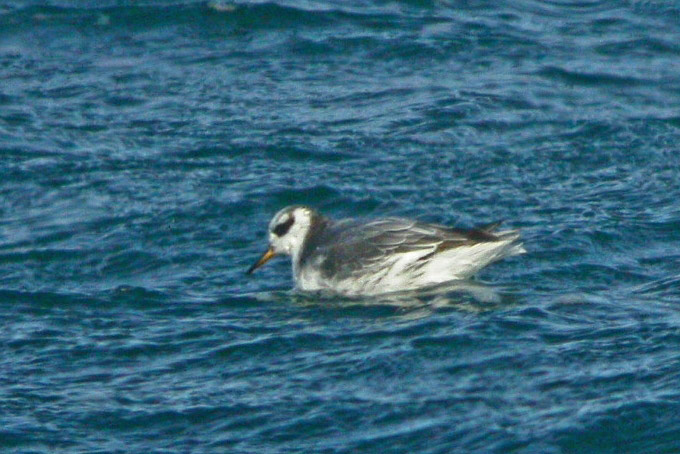

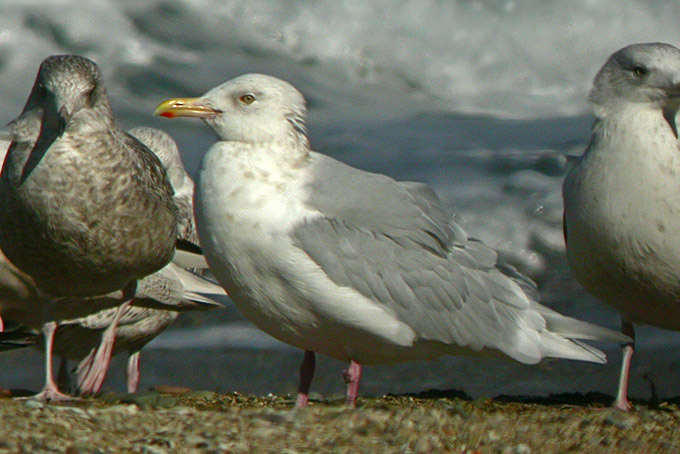


Jangsa Port, January 22
In high winds, nothing special at Sokcho's main harbour: 2 Glaucous Gull, an Ancient Murrelet, 2 Greater Scaup and a flotilla of Harlequin. Fair numbers of Red-breasted Merganser moved offshore, with several Goldeneye, Black-necked and Great Crested Grebe loitering in the bay.Otherwise the typical east coast aggregations of Temminck's Cormorant, Pelagic Shag, Slaty-backed, Common and Vega Gulls. No living thing stirred on the frozen Cheongcho lake.
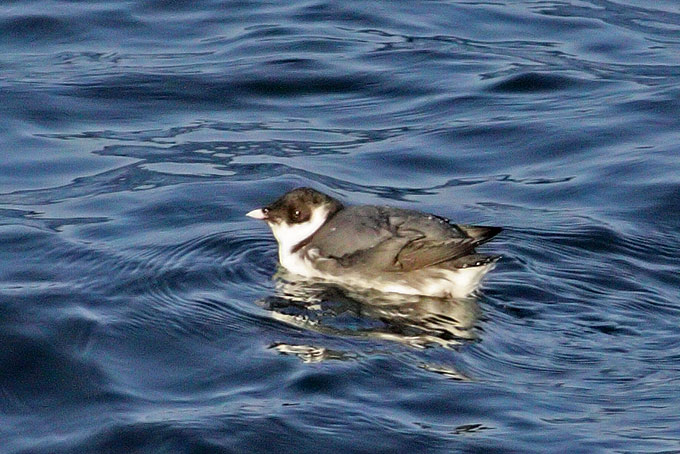
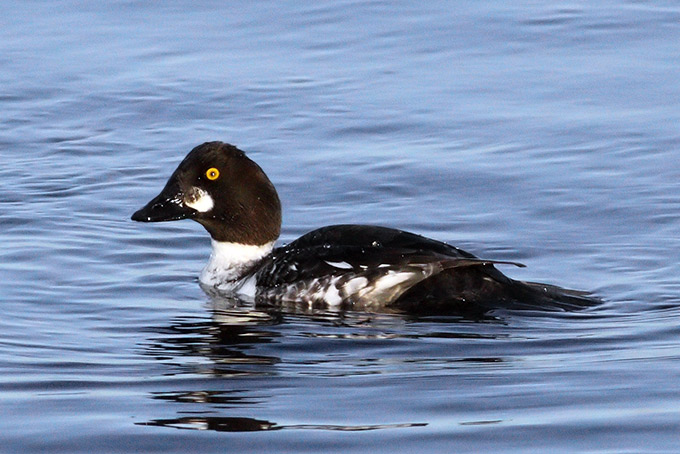
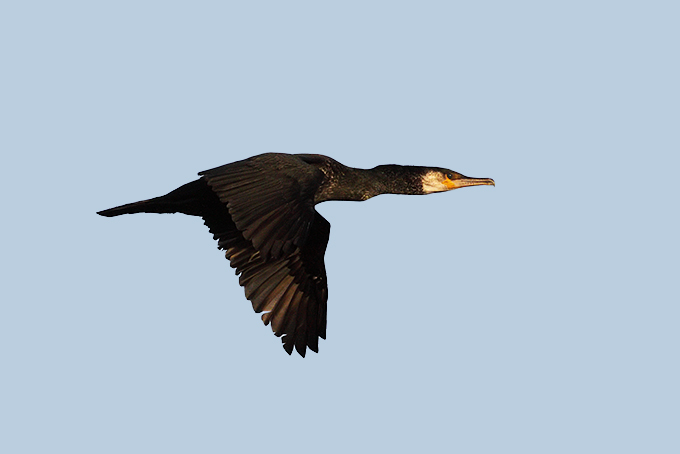
Hwajin Po-Donghae - NE River, January 22
After an excellent night at the January Pension, strong subzero winds and a few very light snow flurries started to give way to spells of sunshine. While the sea held good numbers of grebes and seaduck, there were very few alcids, with only half-a-dozen Ancient Murrelet and c4 Spectacled Guillemot. With a steady southward hard-weather movement of Eurasian Skylark, a “good” passerine seemed rather more likely, and at Daebo these expectations were met by a flock of 37 Asian Rosyfinch and three or more Chinese Nuthatch. With the sea fairly quiet, and no boat trip possible, the team moved south again, finding a Brunnich’s Murre at Okye and single Rhinoceros Auklet and an adult Yellow-billed Loon fairly close to shore just north of Donghae.
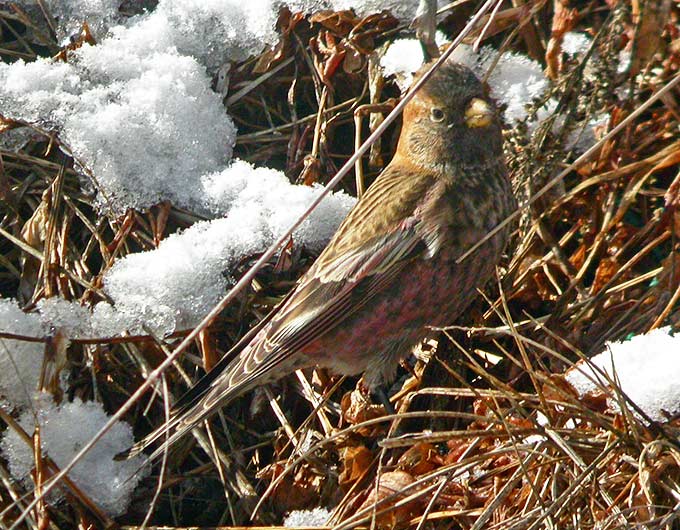
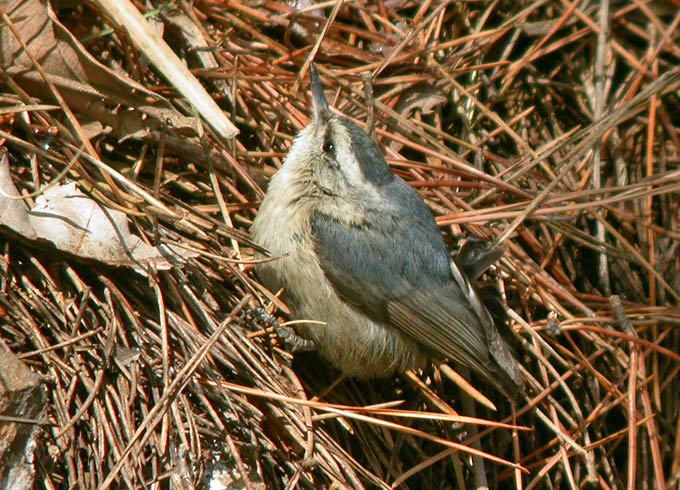
Yangyang-Hwajin Po - NE River, January 21
Under continuing grey skies at Yangyang more great birding, with two Steller’s and two or more White-tailed Eagles, a Chinese Grey Shrike, two or more Long-billed Plover, Japanese Quail (2+), Long-tailed Rosefinch (2+), and a couple of elusive Ochre-rumped Bunting as highlights. The first Harlequin Duck of the trip were then seen at Sokcho under clearing skies, though a few km north the sky darkened once more, and heavy snow started to fall, meaning few birds (beyond e.g. a few American and White-winged Scoter) could be found on the sea offshore from Hwajin Po.
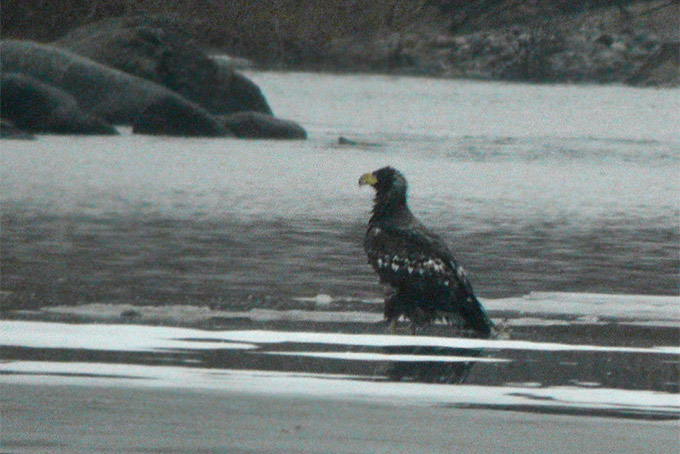
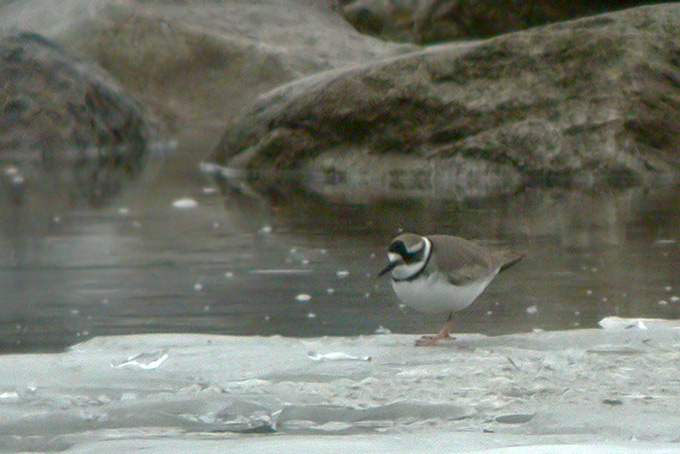
Ansan, January 21
A brief morning toward the upper reaches of Shiwha lake revealed plenty of avian activity. Raptors were noticeable with a Rough-legged Buzzard, 2 Hen Harrier, an Upland Buzzard, 2 Peregrine, 3 Eastern Buzzard and a Northern Goshawk. In the reeds were several Common Reed Bunting, Chinese Penduline Tit and Pallas's Reed Bunting. In scrub around the fringes, 3 Hawfinch, a flock of 25+ Azure-winged Magpie and 10-15 Long-tailed Rosefinch. Best perhaps were close but brief views of a pair of Raccoon Dog, as well as a Korean Red Squirrel 3 Korean Water Deer. On the ice, a Smew and other expected wildfowl such as Commen Merganser, Pochard and Mallard.
Joining Mr. Oh Tae-sok and Mr Suh, Jong-Gi, I was then shown to a ditch where both a Water Pipit and Water Rail have been seen recently, although sadly not today.
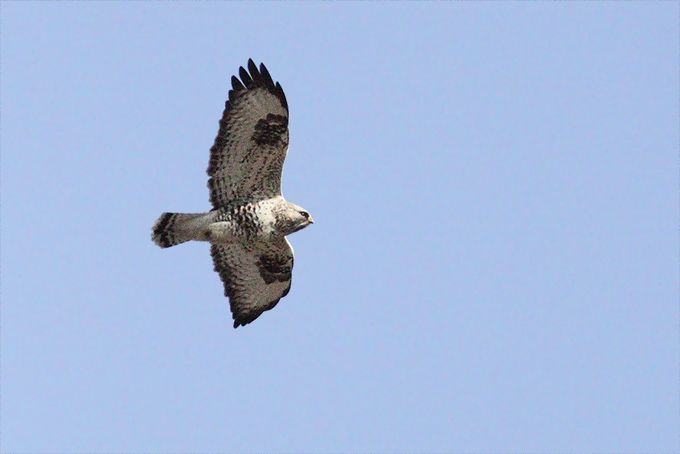
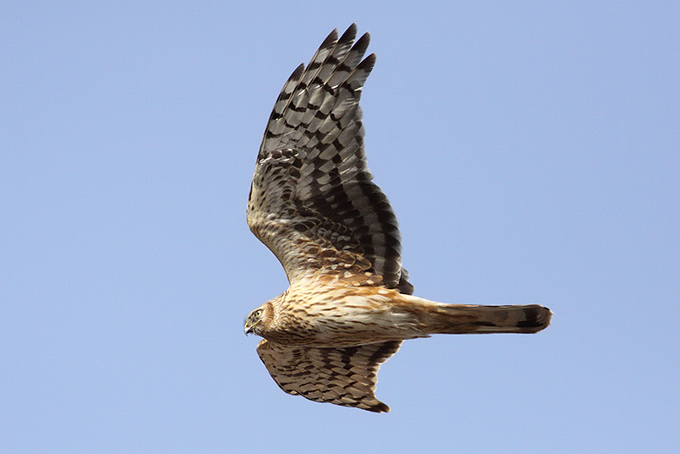
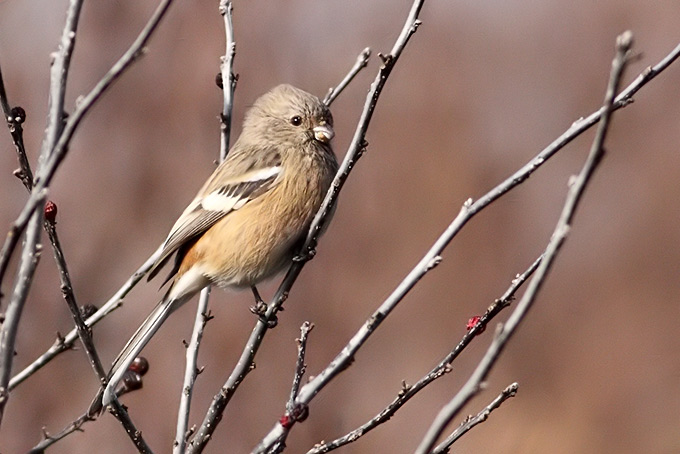
National Arboretum-Han River Seoul - NE River, January 20
In extremely dull and foggy but mild weather, with occasional rain showers and a rapid thaw, a great range of species. Among many notable species obvious highlights included three or four Solitary Snipe, two Grey-capped Pygmy Woodpecker and a White-backed Woodpecker, and between four and six Pallas's Rosefinch (including two absolutely stunning adult males, feeding at close range on Deuteia crenata - better images are lilkely to follow later, taken by members of the Leipzig Zoo birding team) - all at the arboretum; two adult Steller's Sea Eagles with half-a-dozen White-tailed Eagles and a Northern Goshawk at the Han River; and four (two male and two female, one of which was 2cy) Scaly-sided Merganser at NE River. While the birding was great, it was impossible not to feel distressed at the sound of bulldozers on both sides of the river at the Han, and especially to see new construction (apparently road-widening) on the NE River - meaning that the scalies were unable to use their favorite stretch of river, It is clear to all that this kind of work, probably connected in one way or another to the Four Rivers project, fails to consider the national obligation to conserve globally threatened species.
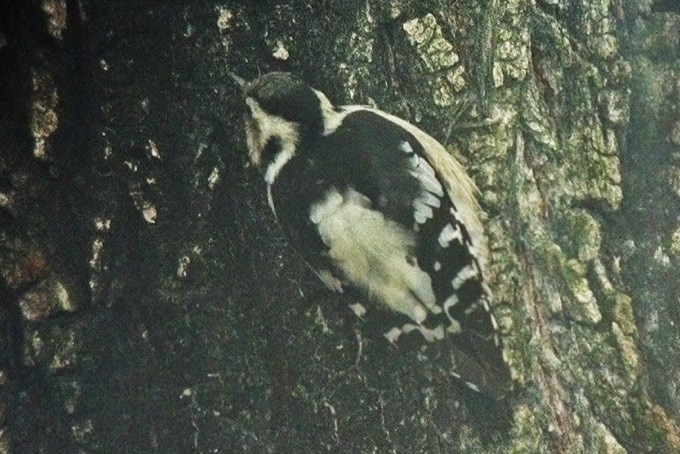
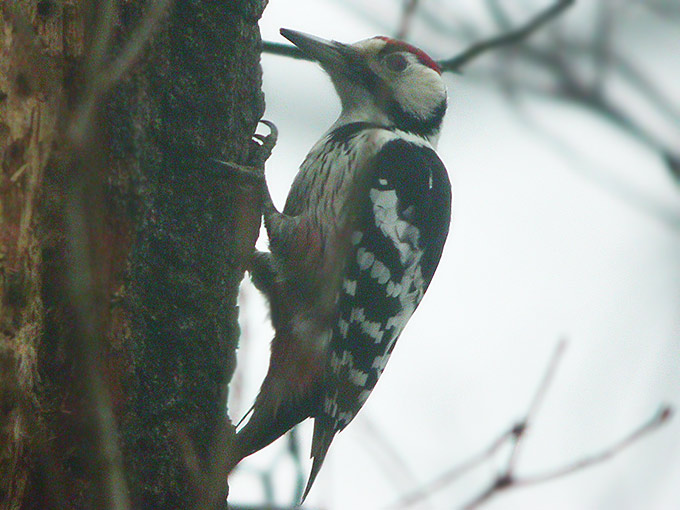
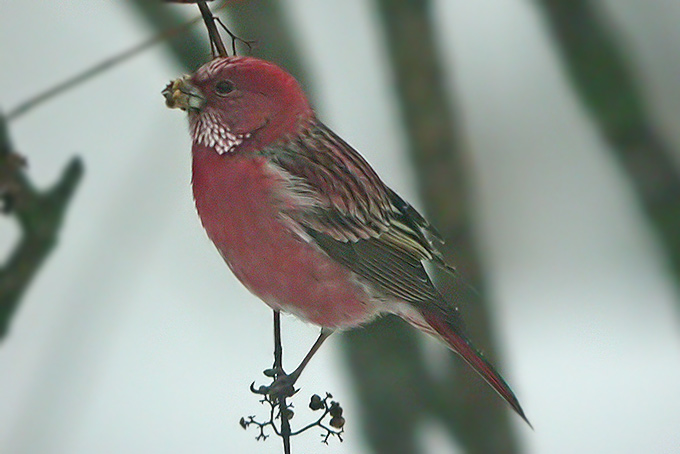
Cheorwon, January 19
In largely bright and calm conditions, an afternoon at Cheorwon, where >20 Red-crowned and White-naped Cranes, c180 Cinereous Vulture (including two Mongolian wing-tagged birds), Siberian Accentor and a Chinese Grey Shrike were all highlights in a snow-covered landscape.
Seogwipo, Jeju island, January 19
There seem to be many more Pale Thrush about in Seogwipo, when compared to the same time last year. At least 8 were seen or heard in thick brush around town. In the harbor, 2 Red-throated Loons cavorted close to shore, in the company of plentiful Vega, Mongolian, and Black-tailed Gulls. One of the Black-tailed Gulls was not in good shape, struggling with both fishing line and oil. Eighteen Gadwall, winter harbor regulars, fed near a small man-made waterfall. Further down the coast, a Pelagic Cormorant was drifting close to some cliffs. Nine Great Crested Grebe were also seen nearby.
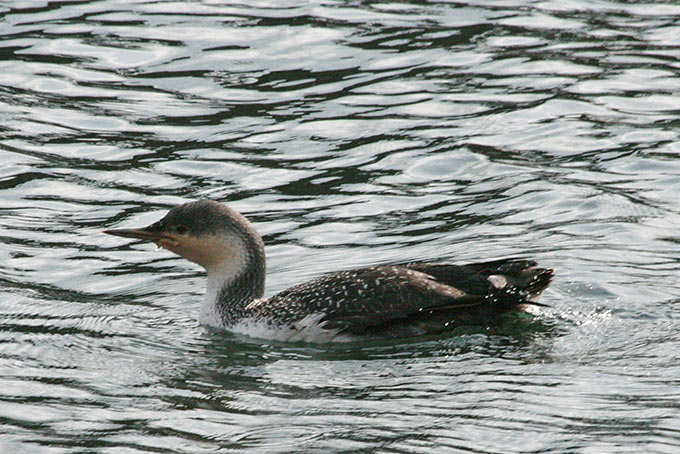
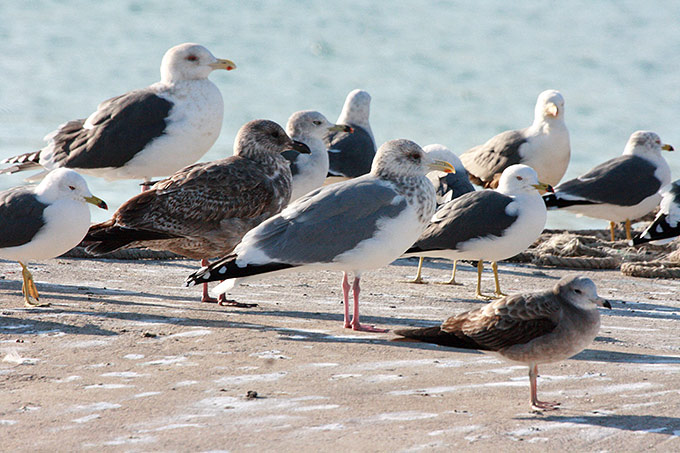
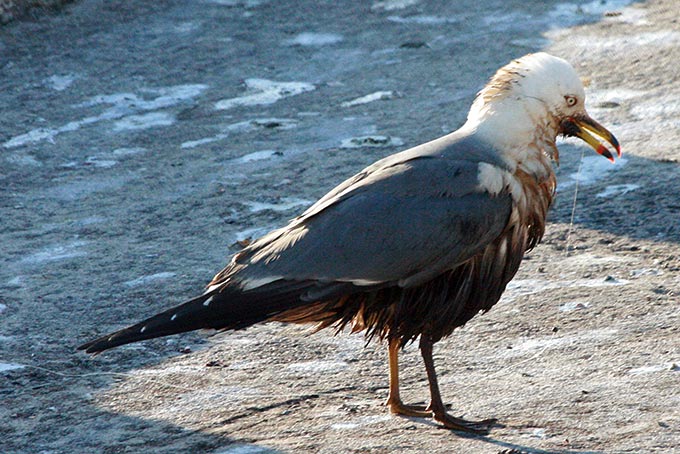
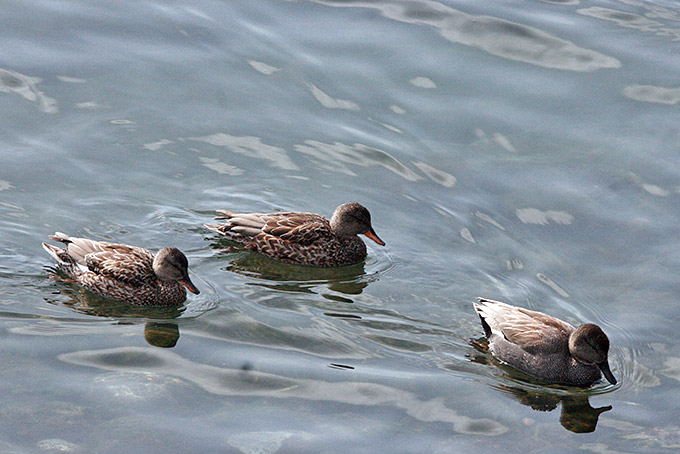
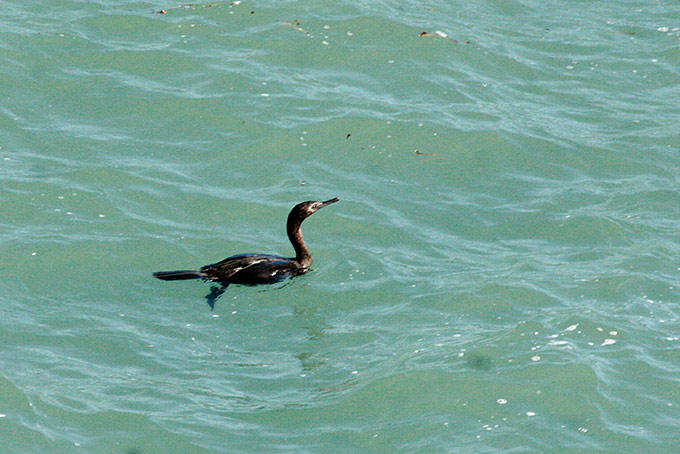
Junam Reservoir, January 16
A productive afternoon at Junam in beautiful calm, sunny conditions. The reservoir is still mainly frozen apart from small ice-free areas, mainly at the northern and western edges of the reservoir. These areas are mostly a long way from the visitor centre and walkway. Therefore most of the wildfowl are distant and difficult to view. Nonetheless, plenty of White-naped Cranes were around the mud spit, with 129 birds counted today – a substantial increase since my last visit. 6 Swan Geese are still present in their usual spot close to the walkway near the pumping station. 1 Ruddy Shelduck flew overhead at the northern end of the reservoir, and was later seen resting near the mud spit.
The wintering adult Long-tailed Shrike was seen again, this time along the path about a mile northwest of the pumping station. A few Meadow Buntings were also in this area, totalling perhaps 3 or 4 birds, loosely associating with the abundant Yellow-throated Buntings.
The orchards and scrub along the southern edge of the reservoir, accessed along the minor road near the entrance to the walkway, were once again productive for thrushes, with 3 Pale Thrushes, a scattering of Dusky Thrushes, and a very briefly seen probable Naumanns Thrush (or hybrid). A Grey-headed Woodpecker was also seen in this area.
Raptors were represented by the usual adult White-tailed Eagle, and one (or perhaps two) ringtail Hen Harriers seen on several occasions during the afternoon.
Gageo Island and ferry to Mokpo, January 14 & 15
After the snow, a thaw through 14th and 15th, and still no evidence of any kind of hard weather movement. Birds still present on Gageo on 14th included an extremely oddly-calling Buff-bellied Pipit (frustratingly, very mike-shy!), two Lapland Bunting and the Upland Buzzard still. In addition, while gull numbers fell away rapidly with the departure of most of the fishing boats, those that remained included a good range of the more widespread larger species – Vega, Mongolian and taimyrensis Heuglin’s Gull (or Taimyr Gull) – some of which allowed closer approach than usual. The range of appearance in the half-dozen or so First-winter/Second Calendar Year Taimyr Gull was especially interesting, with one e.g. showing a slimmer, pinkish-based bill, a longer primary projection, and a lot more contrast on the head than is typical (all somewhat “fuscus-like”) but still a pale blaze across the inner primaries and very pale and checkered coverts, while another was more clearly (soon-to-be) white-headed, with several blackish “blotches” on the scapulars. Much sadder to note, several dead oiled birds found this day, e.g. Great Crested Grebe, Red-throated and several Arctic Loons, including one photographed alive and fairly active just two days before. On the 15th, a relatively quiet sea-crossing back to Mokpo, with species of most note a single Rhinoceros Auklet just off northern
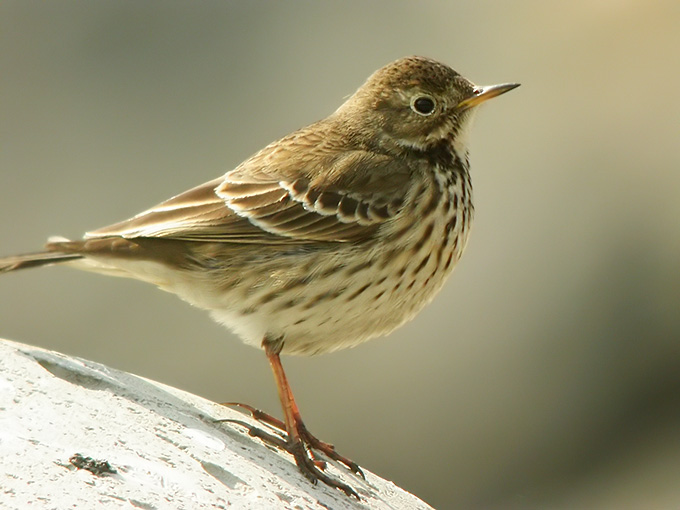

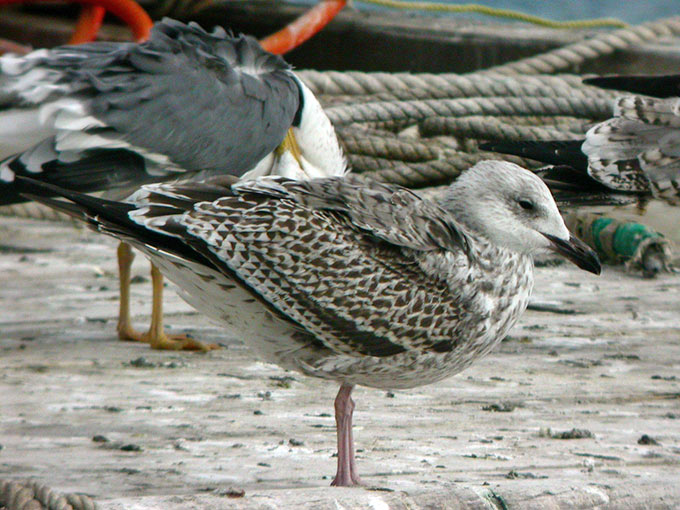

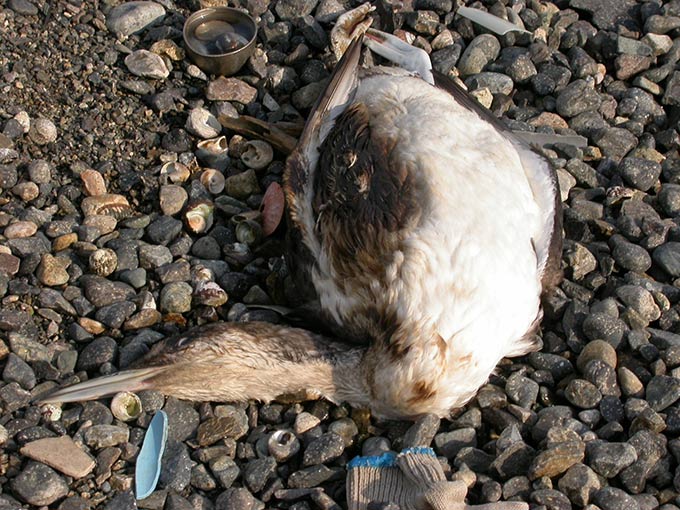
Gageo Island, January 13
Sub-zero temperatures, near gale-force winds at times, and heavy snow through much of the day, limited survey effort. In the harbour, still many oiled birds, with now seven out of eight Great Crested Grebes seen oiled, though at least one Red-throated Loon happily appeared oil-free. Off the south end, around the large number of Chinese fishing- boats sheltering from the storm, were c 5700 gulls, most of which were Black-tailed, but including 35 Mongolian Gull in one raft – perhaps the beginning of their northward migration? Happily, very few of these gulls appeared contaminated. Species of most note included the Upland Buzzard still (apparently feeding, or trying to feed, on gulls), two Japanese Quail, and two Lapland Longspur in the quarry still.
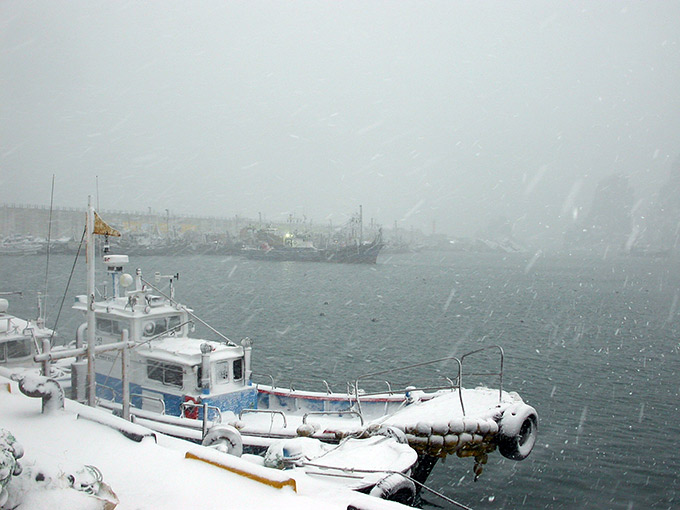
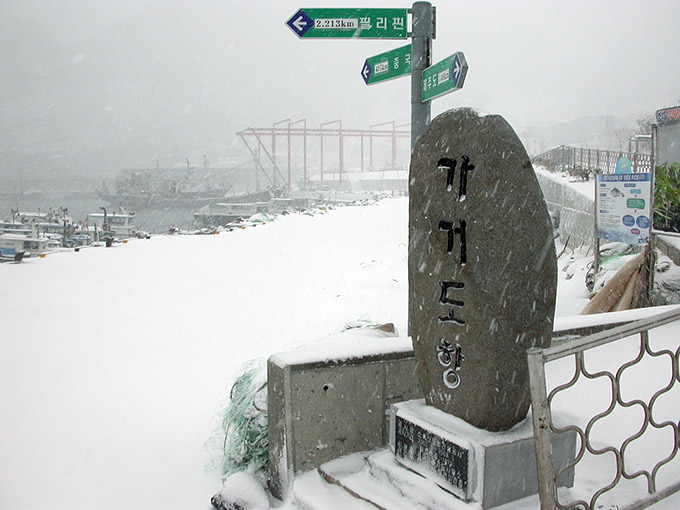
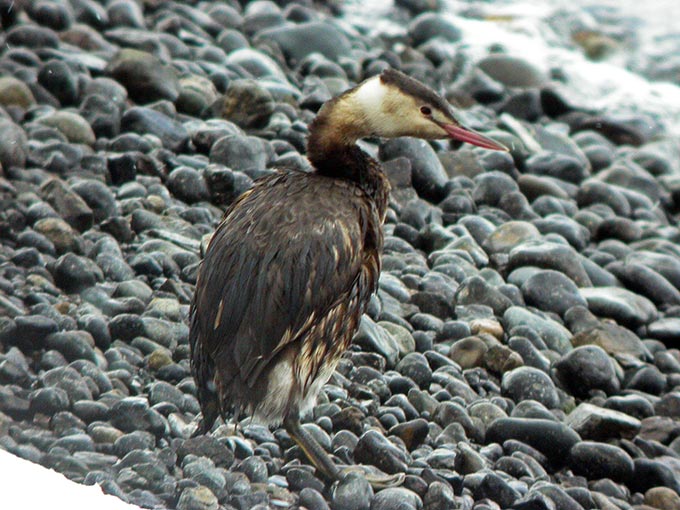
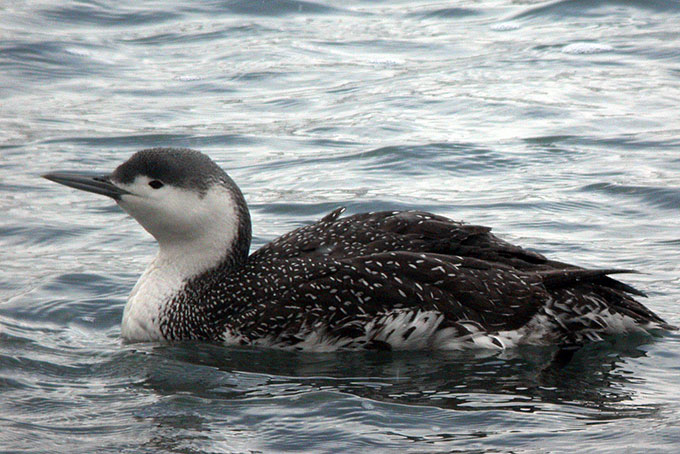
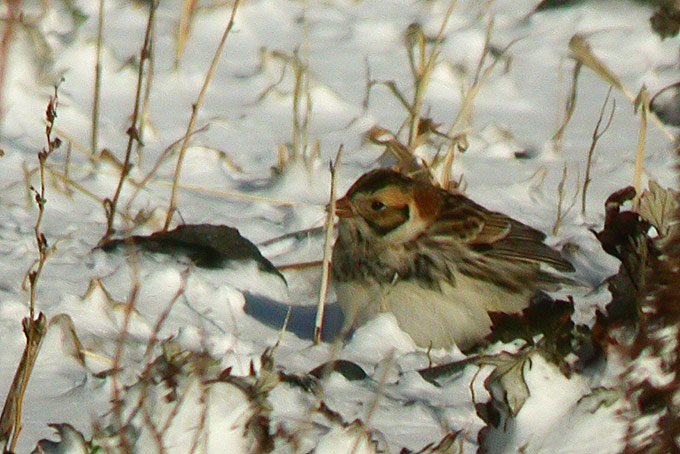
Gageo Island, January 12
A day of obvious highs and lows, with 43 species logged around the 1-Gu circuit. In increasingly cold conditions, with occasional light snow flurries, most unexpected highlights were single Pallas’s Leaf Warbler and Korean Bush Warbler (the latter identified on plumage alone), while the harbour also produced a Common Shelduck (presumably the first record for Gageo, and about the 258th species recorded here by Blueprint survey work since February 2009). Very low point came with the distressingly high number of oiled birds around the harbour, with 82 out of 310 gulls that could be properly checked in one roost showing some oil. The most affected species was Black-tailed Gull (also the most numerous species present), with in total between 100 and 150 contaminated, Using the 1-5 grading system developed during the 2007 Taean oil spill (with “1” representing small oil stains and “5” representing complete saturation), approximately 15% of these oiled Black-tailed Gull were 1s, 40% were 2s, 25% were 3s and 20% were 4s. Other oiled gulls included six Vega (out of c 50 checked), one Heuglin’s (out of 10 checked), one Mongolian (out of three checked), seven Common (out of 14 checked) and four out of the six Black-legged Kittiwake that were carefully checked. In addition, one presumed Caspian Gull (or Caspian-type Gull) also showed light oil spots, while five out of five Arctic Loons, both single Red-throated and Pacific Loons, four out of five Great Crested Grebe and a single Ancient Murrelet were also oiled. The high incidence of oil on species found regularly near fishing boats and close to offshore Gageo suggests that a local oil discharge might be responsible, and the increase in oiled birds coincided with an increase in fishing boats arriving to avoid a forecast storm. However, while chronic oil pollution is a major concern (in February and March too, there were dozens of oiled birds recorded) there has also been another fairly large oil spill recently, again off Seosan and again in late December. Clearly, there is an urgent need to strengthen and enforce laws regarding oil pollution, to improve monitoring (none of the local fishers asked had noticed any oil, or oiled birds), and to improve greatly the oiled wildlife recovery system.
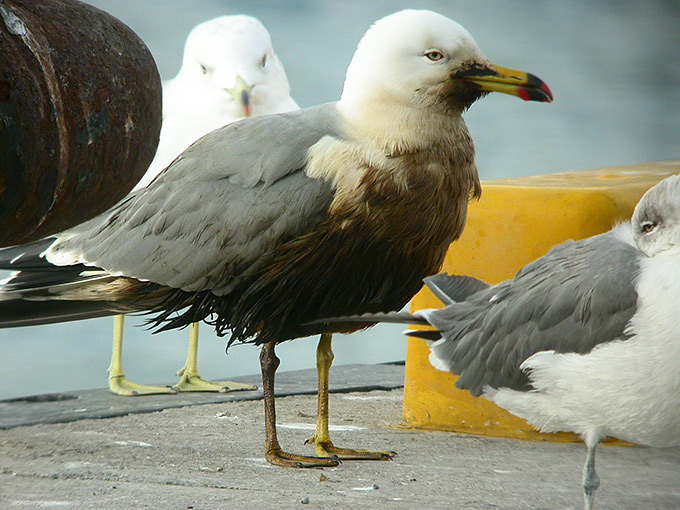
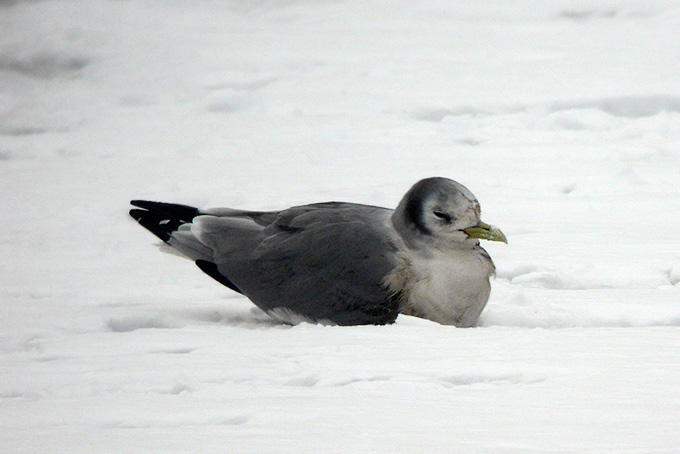



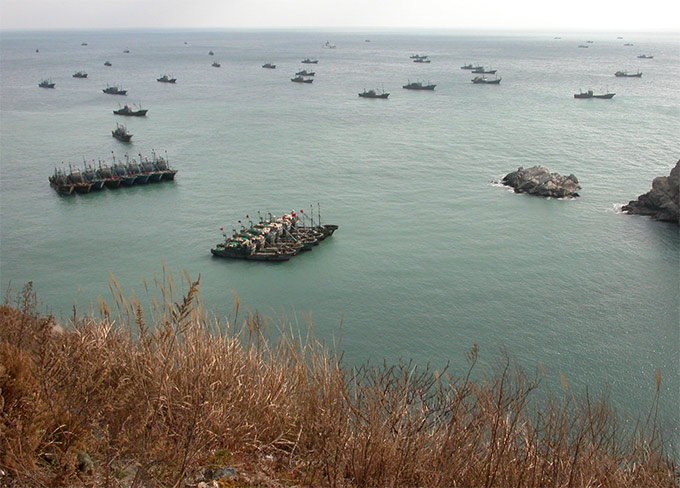
Mokpo-Gageo ferry & Gageo Island, January 9-11
In light seas the ferry journey across to Gageo provided a lot of interest, with c 1500 loons counted off only one side of the boat the main highlight, including a flock of almost 1200 off Heuksan. While the count data is still being processed, the majority were Pacific Loon, with several hundred Arctic Loon, and only a handful of Red-throateds. In addition, 60 or so Ancient Murrelet were counted, while two alcids seen at mid-range remain puzzling: all part of the challenge of seawatching from high-speed commercial ferries! The first, was grey-black and white, and was the size of an Ancient in direct comparison. While it had a head pattern somewhat suggestive of Long-billed Murrelet it was plain above, with no white scapulars apparent. The second was even more intriguing. Sitting on the water, it was clearly tiny, all black and white, and resembled a miniature Tufted Duck, in that it was all black above, black headed and breasted, white-flanked and darker towards the rear end: all very suggestive of a breeding-plumaged Little Auk!
On or from Gageo itself, a full (and extremely gruelling!) survey of the island as part of the Birds Korea Blueprint produced 64 species, including more than 20 Black Woodpigeon (all in the same territories that have been occupied throughout the year: clearly the species is resident and very localised even on the island itself), with most numerous species being Brown-eared Bulbul (244), Japanese White-eye (148) and Varied Tit (64) – also considered more or less resident here. Other species of note included six Mandarin Duck, a presumed First winter Upland Buzzard (most obviously an Upland in flight, when it received much unwanted attention from two or three of the local Peregrine), an almost full-adult male Pallas’s Rosefinch (personal first on Gageo), a Long-tailed Shrike, four Light-vented Bulbul and two Dusky Warbler.
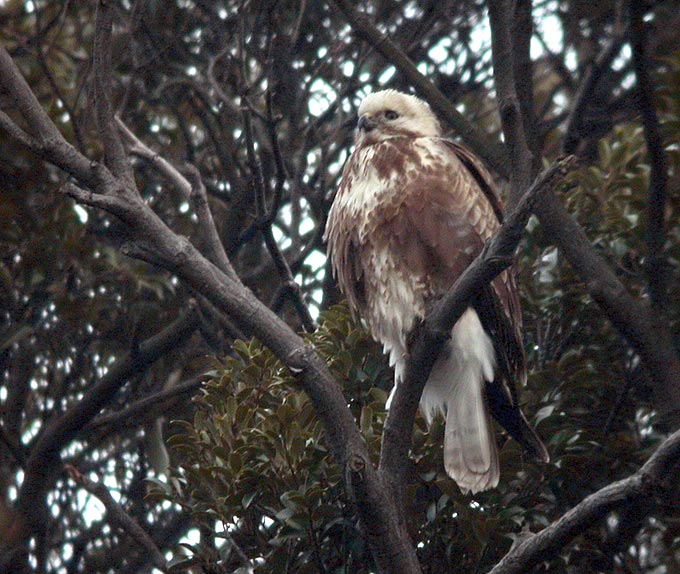
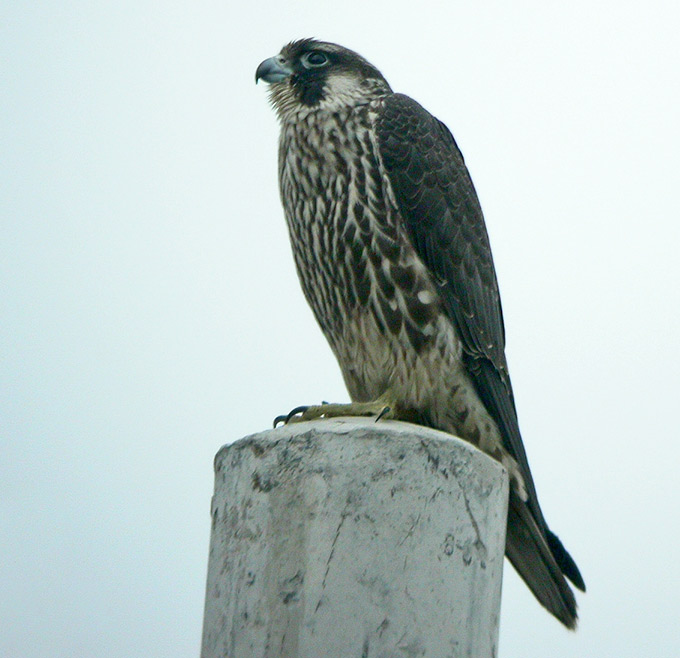
Uiryoung, January 8
During a one-and-a-half hour watch in woods, I saw a Common Kestrel, at least 4 Japanese Pygmy Woodpeckers, numerous Eastern Great Tits, some Varied Tits and Marsh Tits. A Eurasian Sparrowhawk flew very low through the trees flushing out a beautiful Red-flanked Bluetail, which posed confidingly once the danger had passed.
On for a half-hour stop by a small river on the edge of the town. An ice-free section allowed a concentration of all the following in a stretch no longer than 50 meters: three or four pairs each of Falcated Duck, Common Teal, Mallard and Eastern Spot-Billed Duck, a Little Egret, a pair of White Wagtails, a Green Sandpiper, a Long-billed Plover and a Common Kingfisher, who was a bit put out by all the intruders.

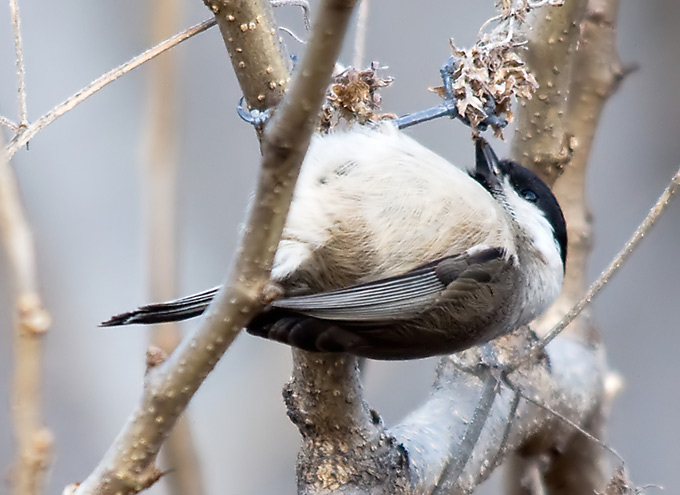
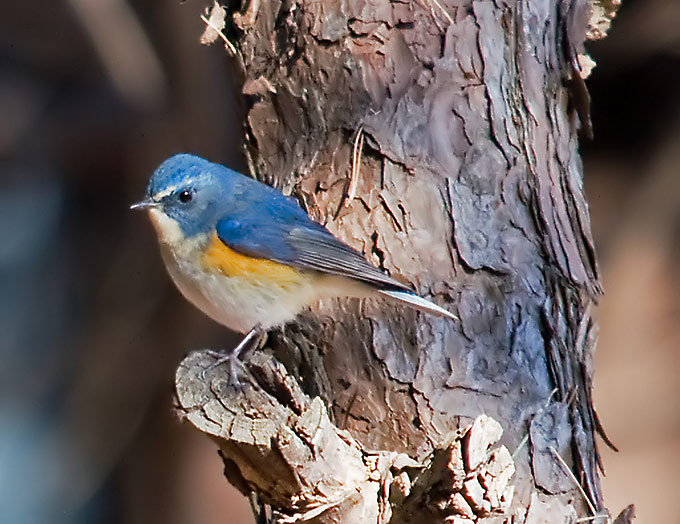
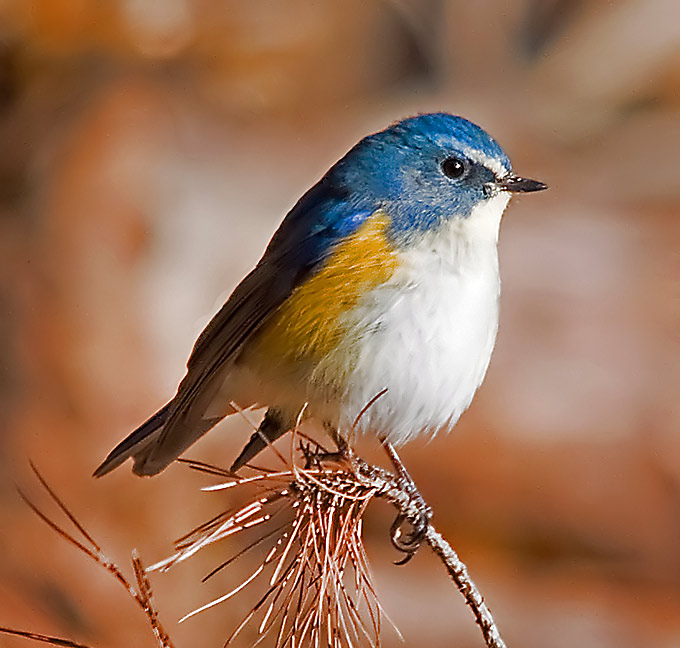
Shiwha, January 3
In a brief couple hours at the lake's frozen lower reaches, apparently only smaller numbers of the regular wildfowl such as Falcated Teal, Wigeon, Coot and Common Pochard. Best probably 20+ Smew, several Buff-bellied Pipit, c.80 Whooper Swan, 6 White-tailed Eagle and a Hen Harrier.
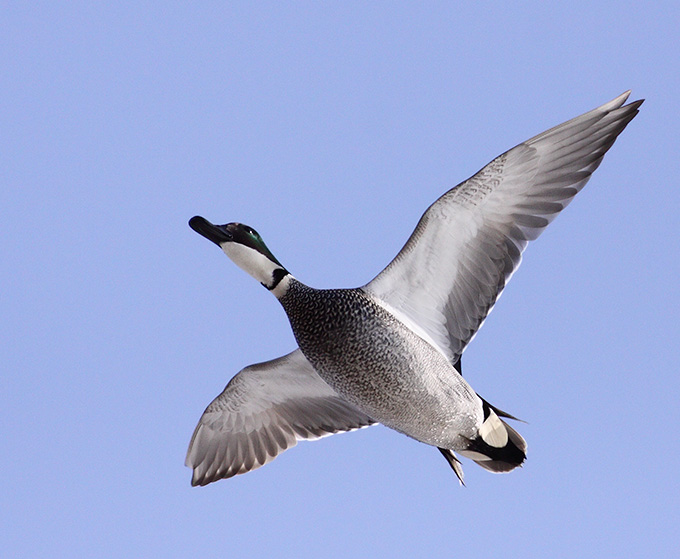
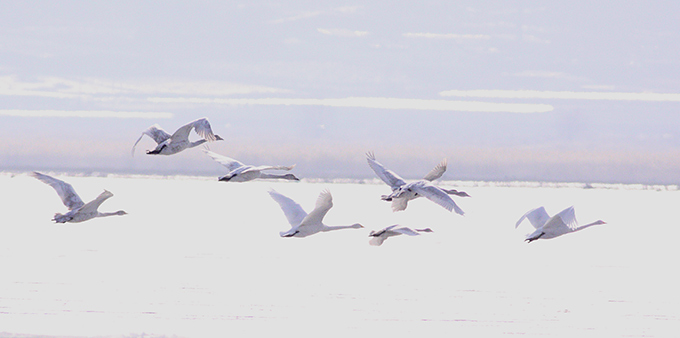
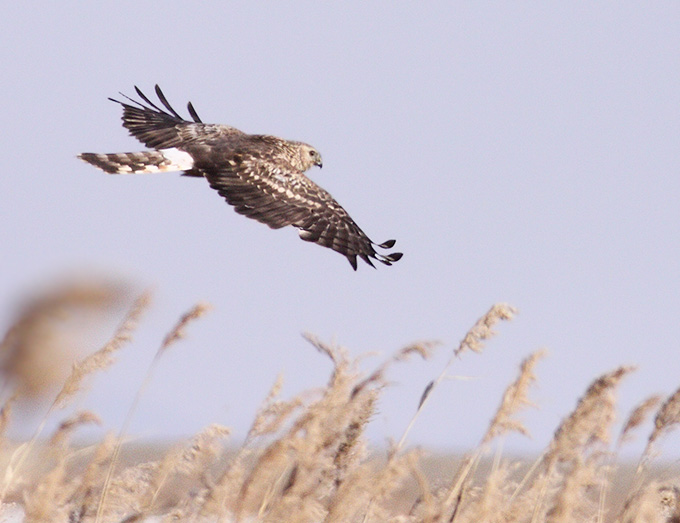
Paldang, January 3
I made tracks through a nice blanket of snow along the Paldang 'rapids'. Much of the water area, thankfully enough, did not succumb to the ice. This caused a great influx of avian. Highlights were as follows: 4 Ring-necked Pheasant, 8 Little Grebe, 16 Grey Heron, 6 Smew, 300 Common Merganser, 700 Common Goldeneye, 50 Whooper Swan, 200 Greater White-Fronted Geese (which flew over to rice fields across the river from Paldang Stn.), 300 Tufted Duck, 50 Common Pochard, small numbers of Mallard & Spot-Billed, 2 Stellar's Sea Eagle, 4 White-Tailed Eagle, 1 Eurasian Kestrel, 1 Eastern Buzzard, and a wild assortment of Yellow-throated & Meadow Bunting with Marsh & Great Tits.

